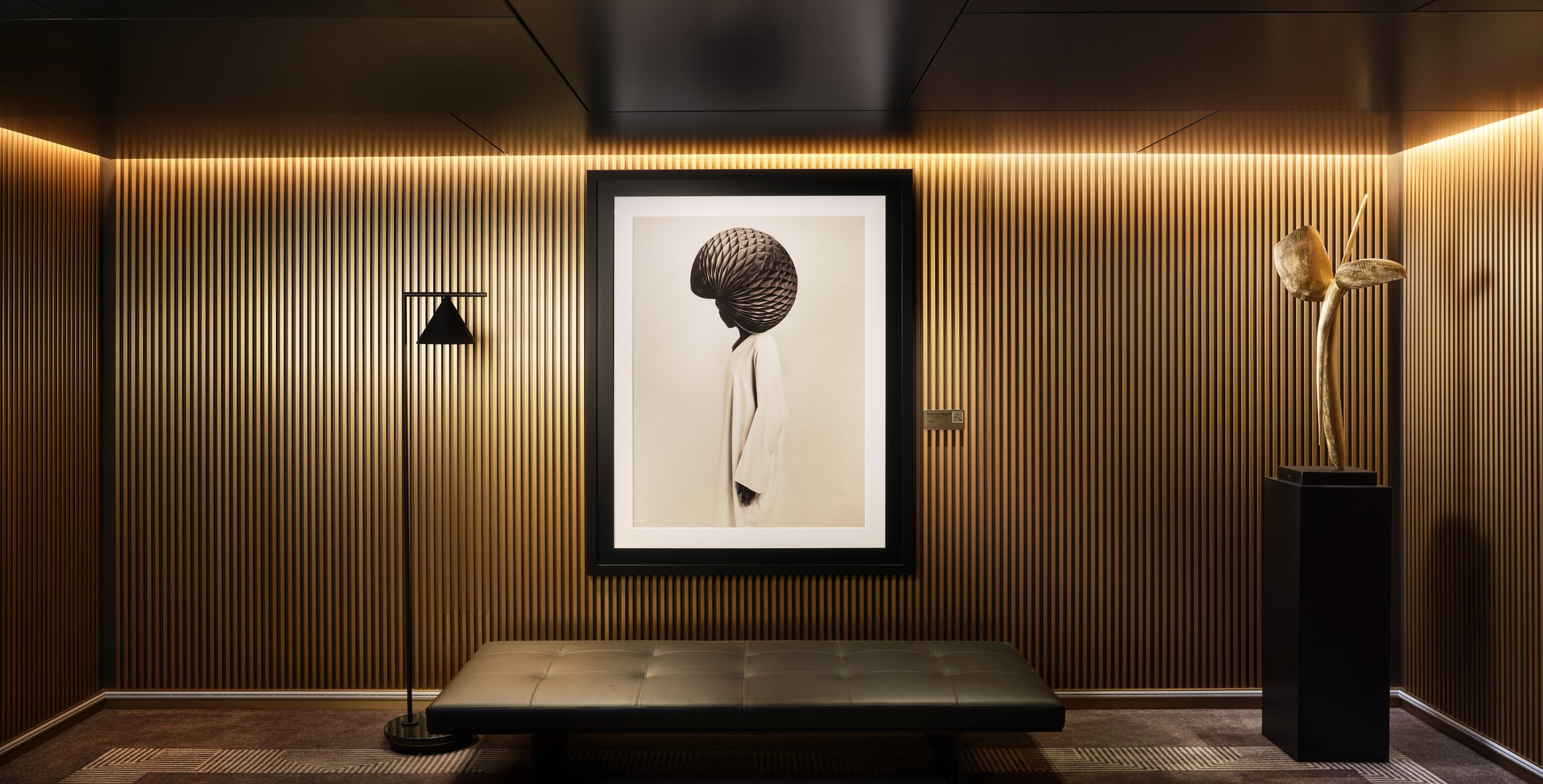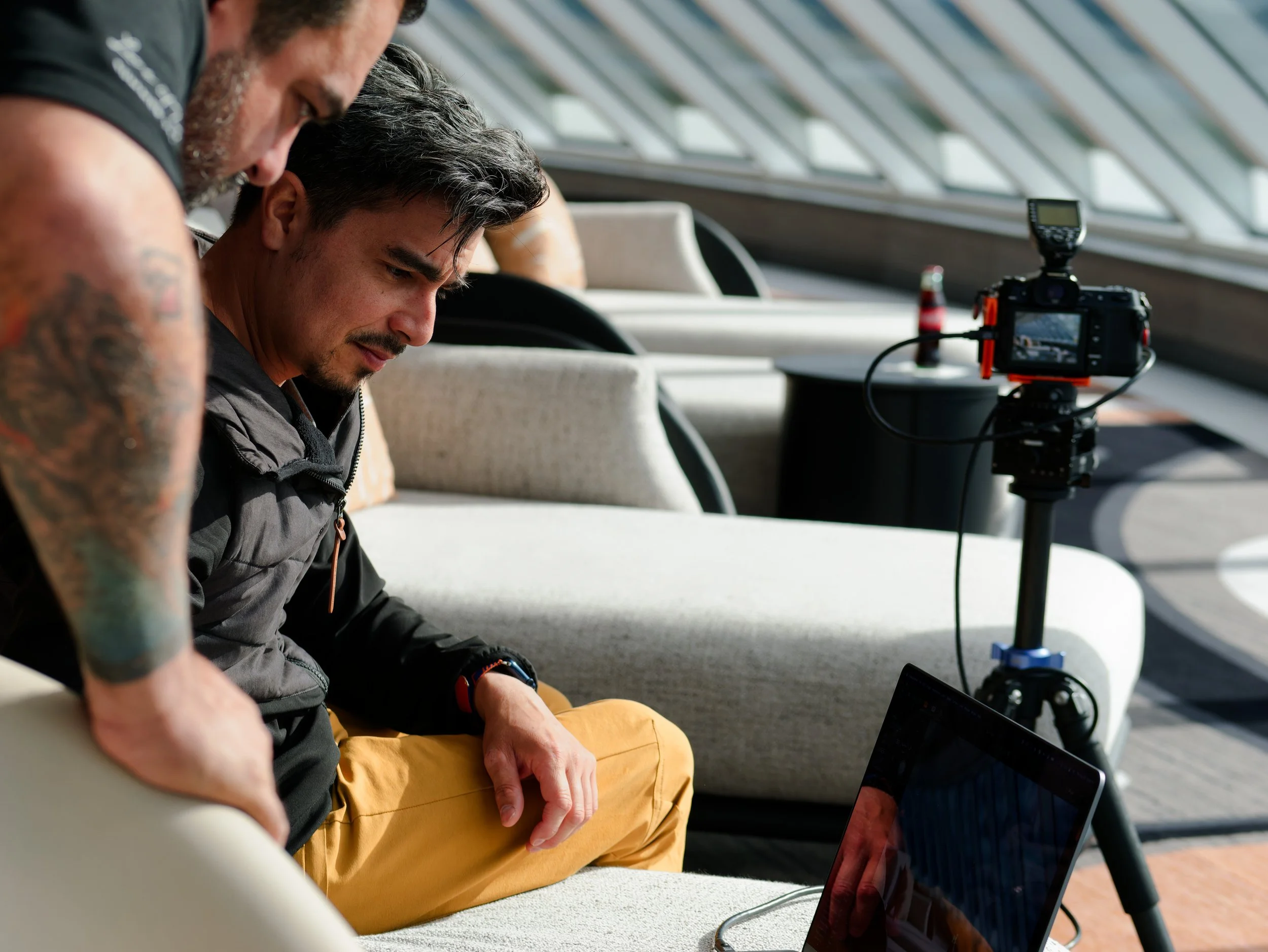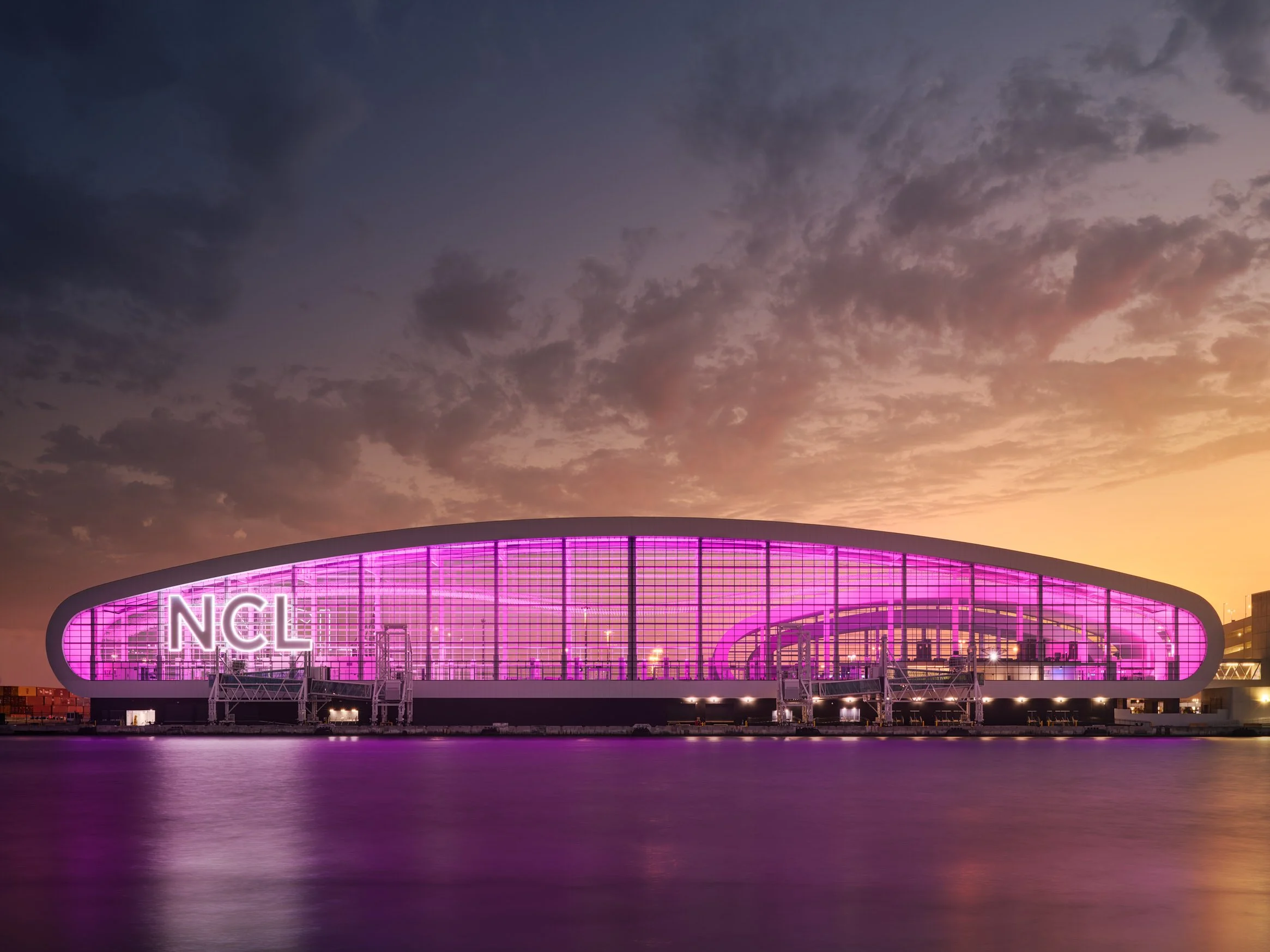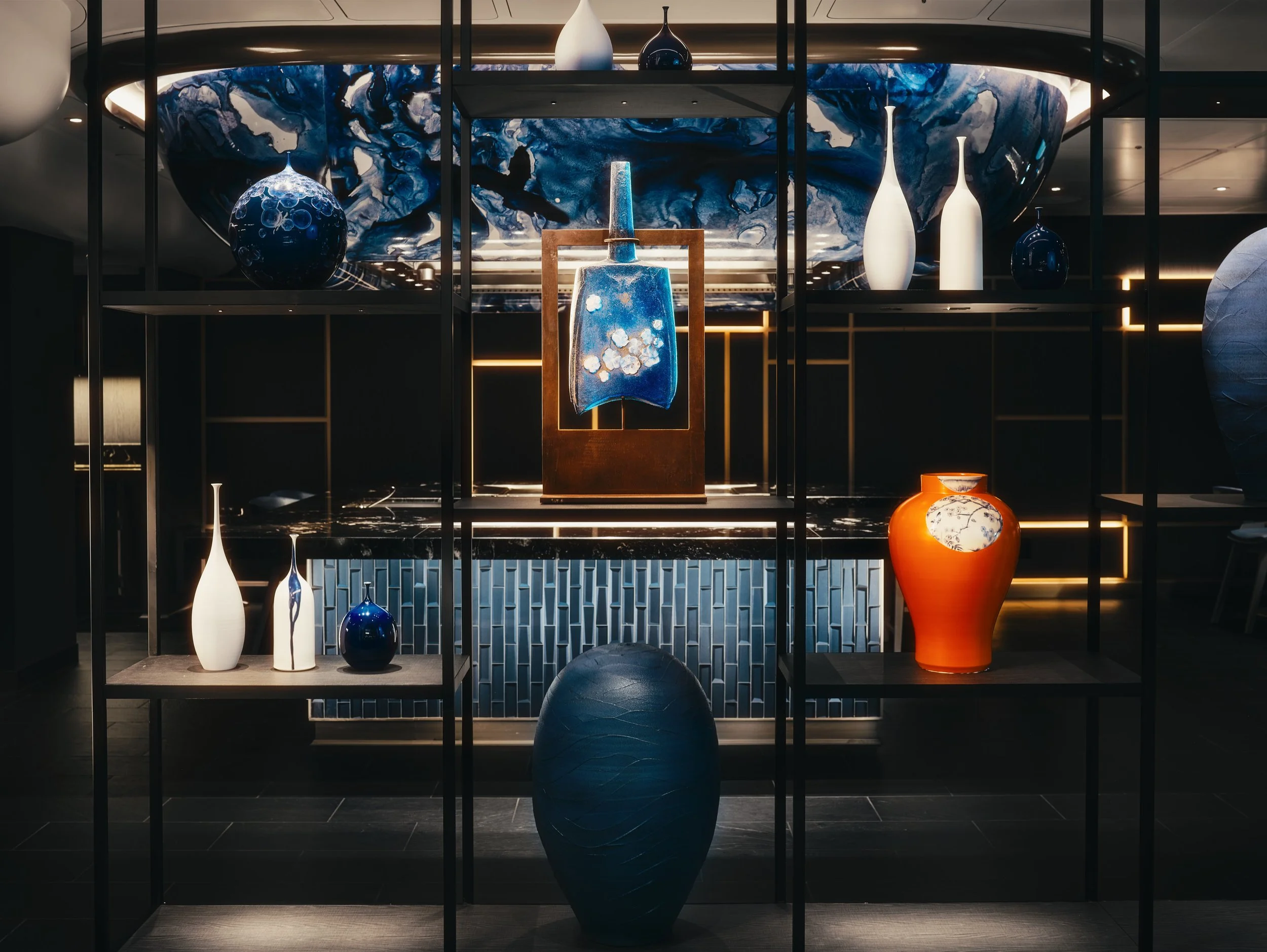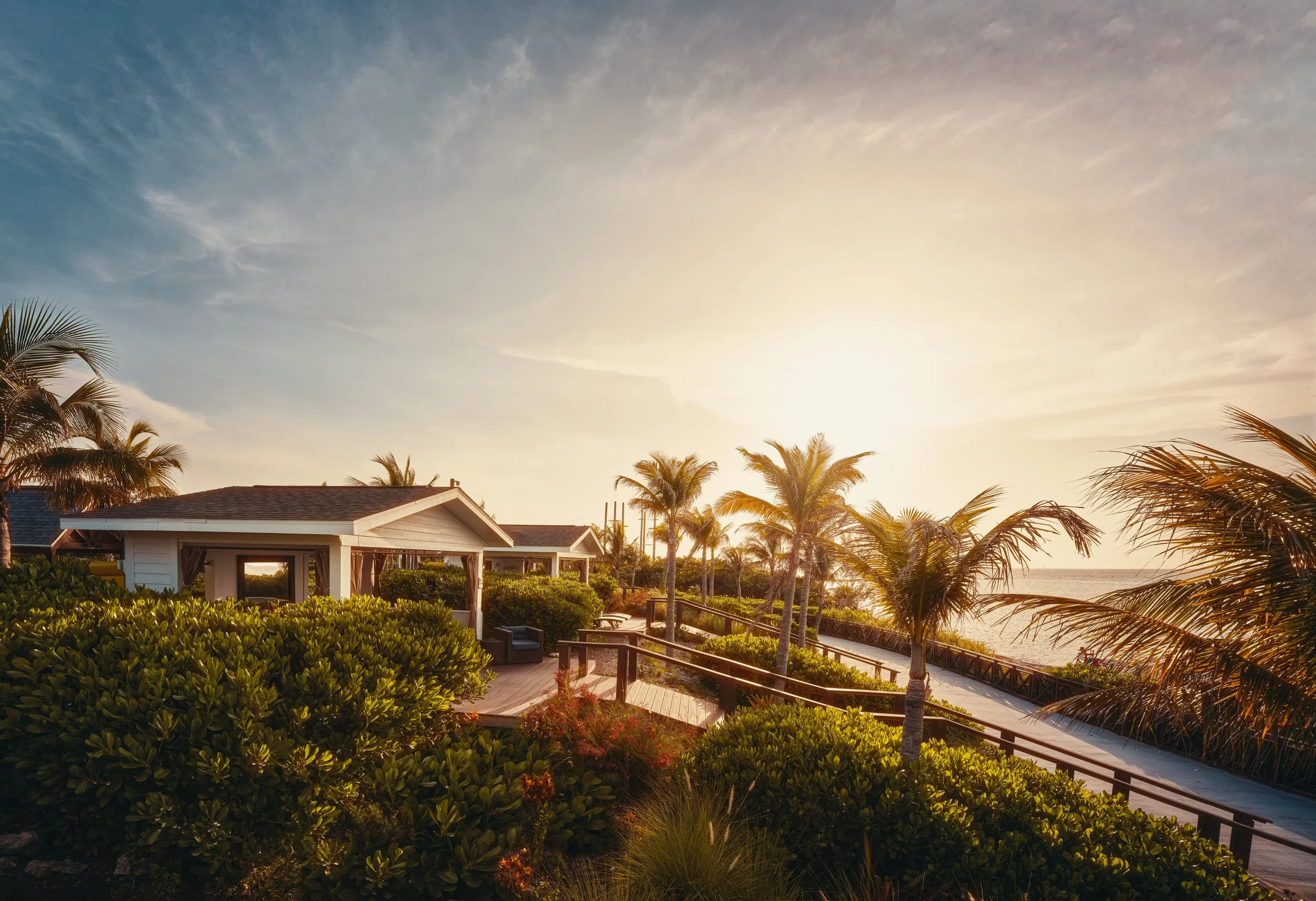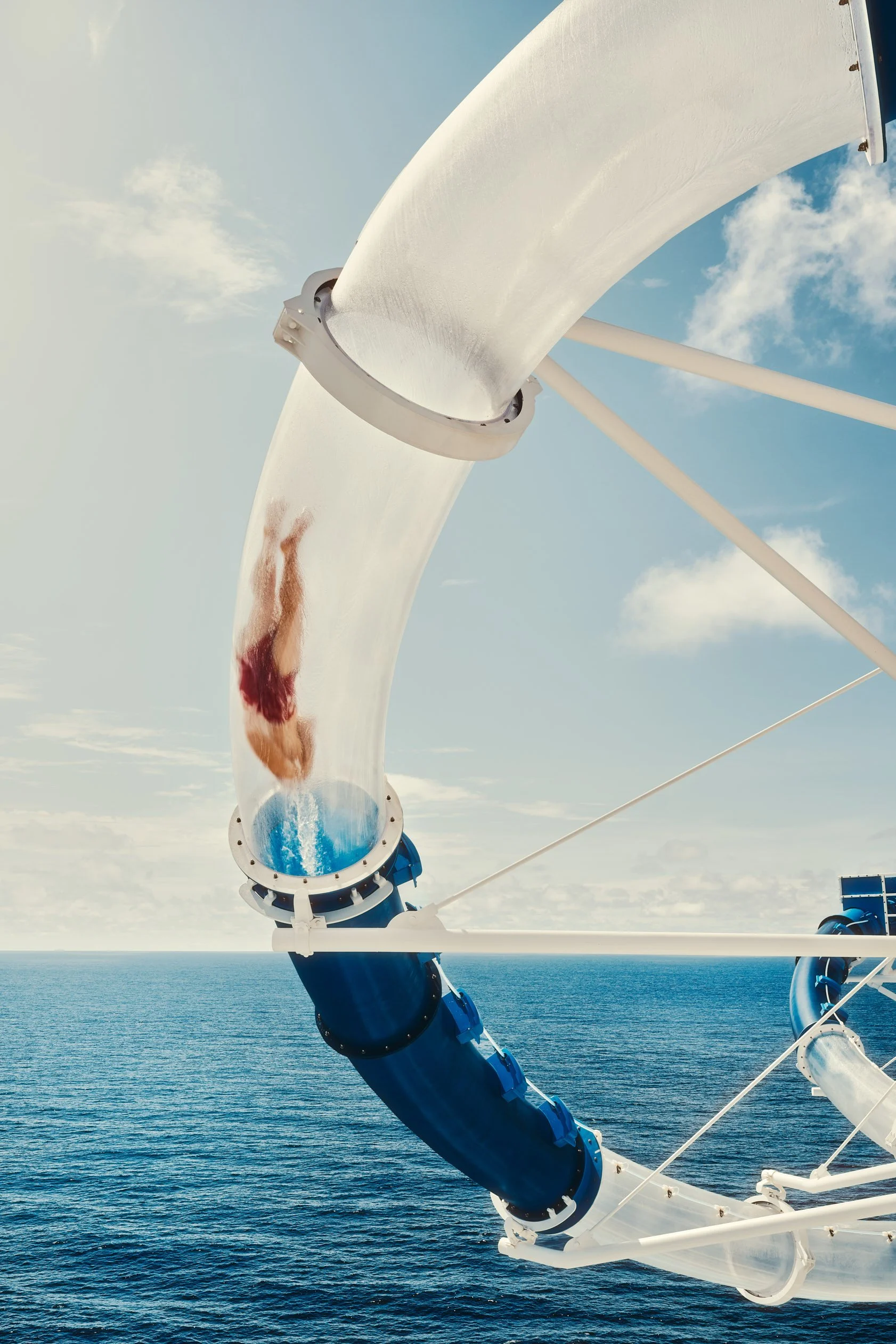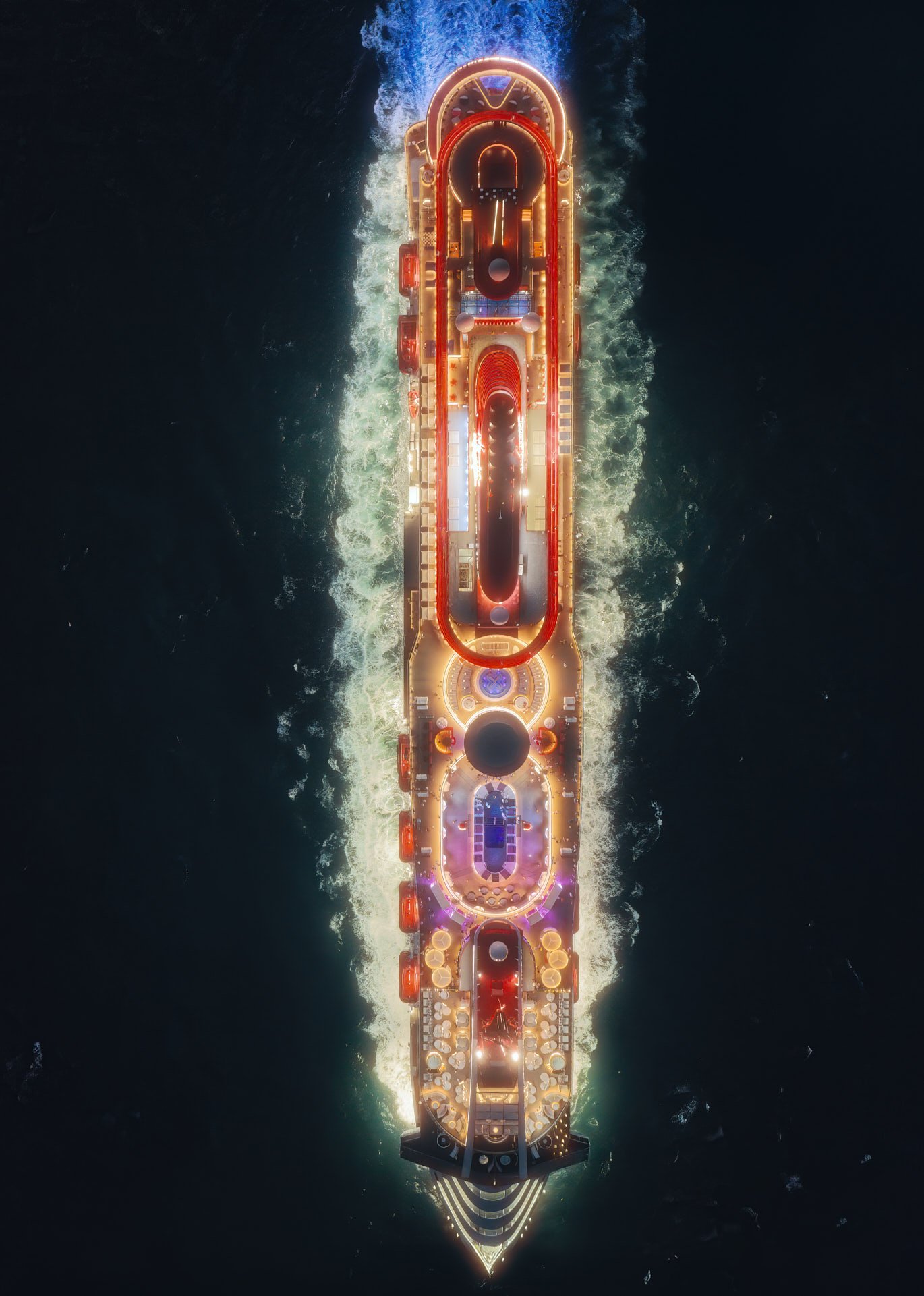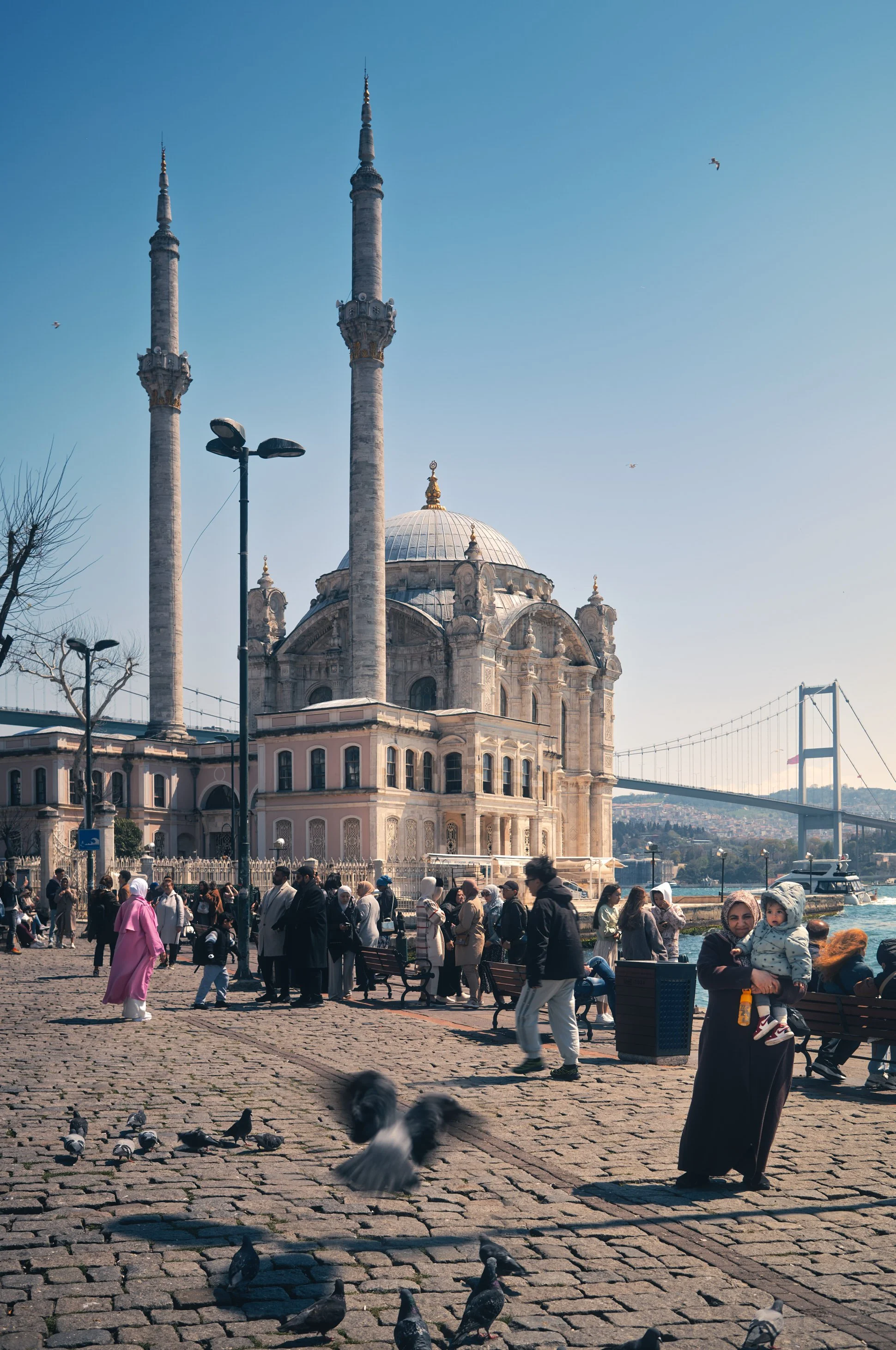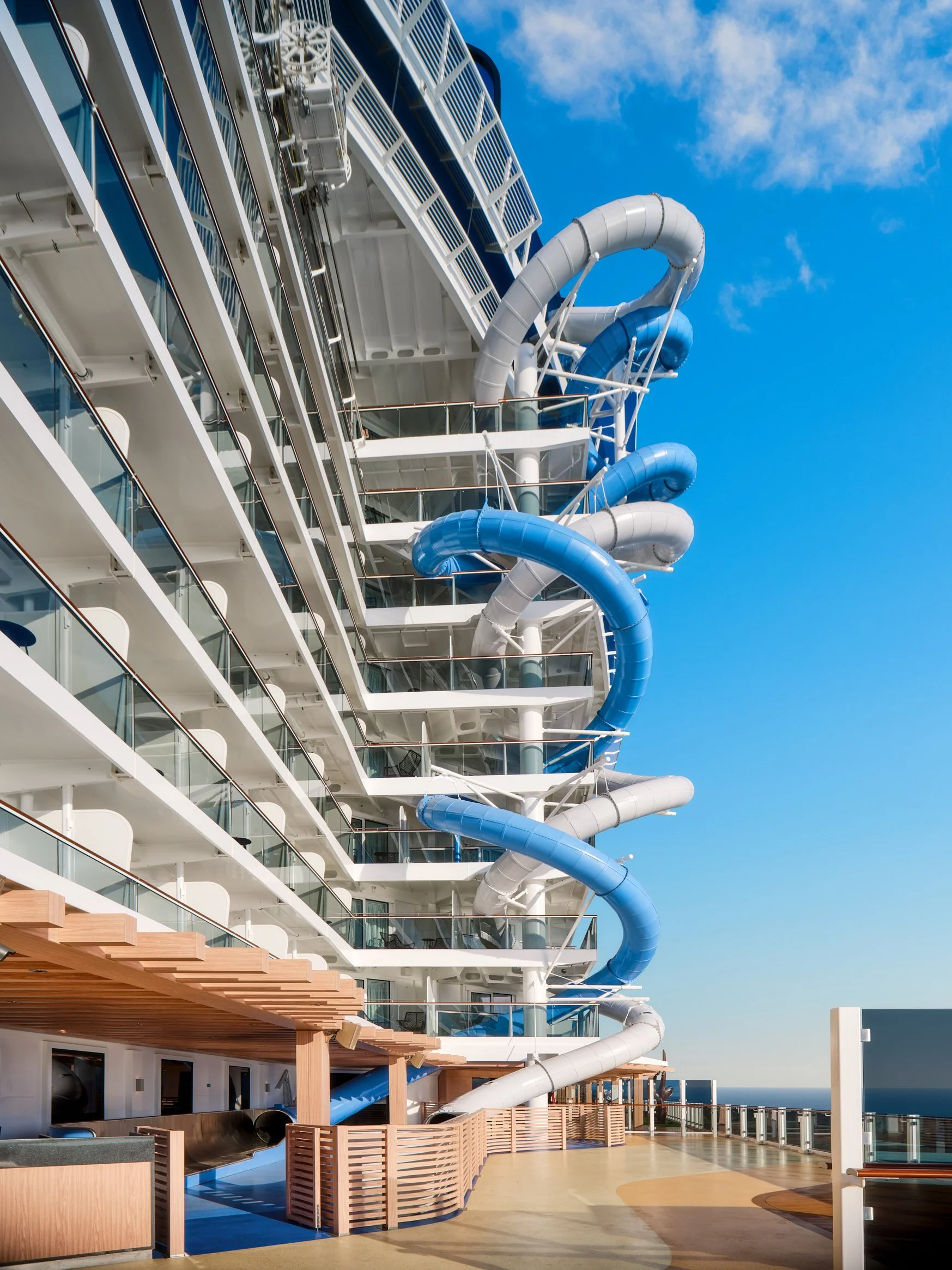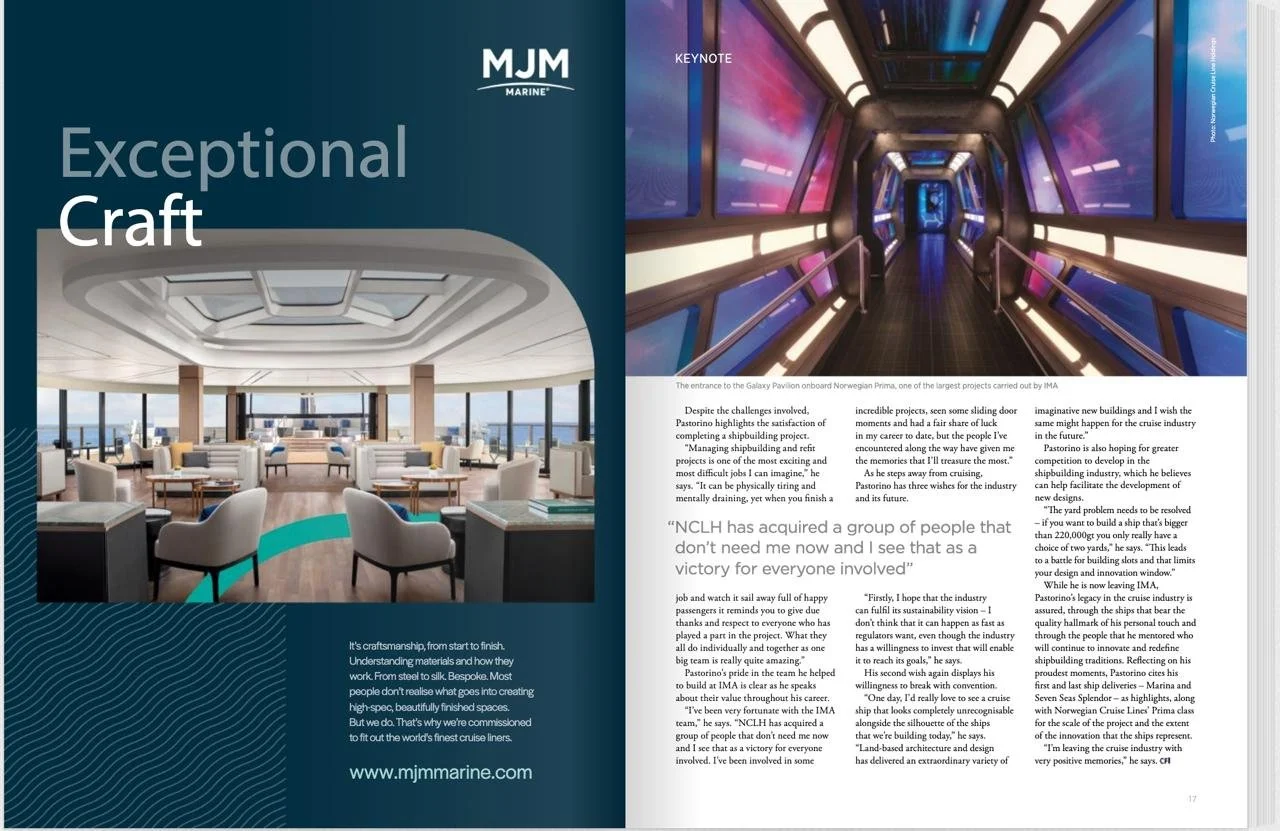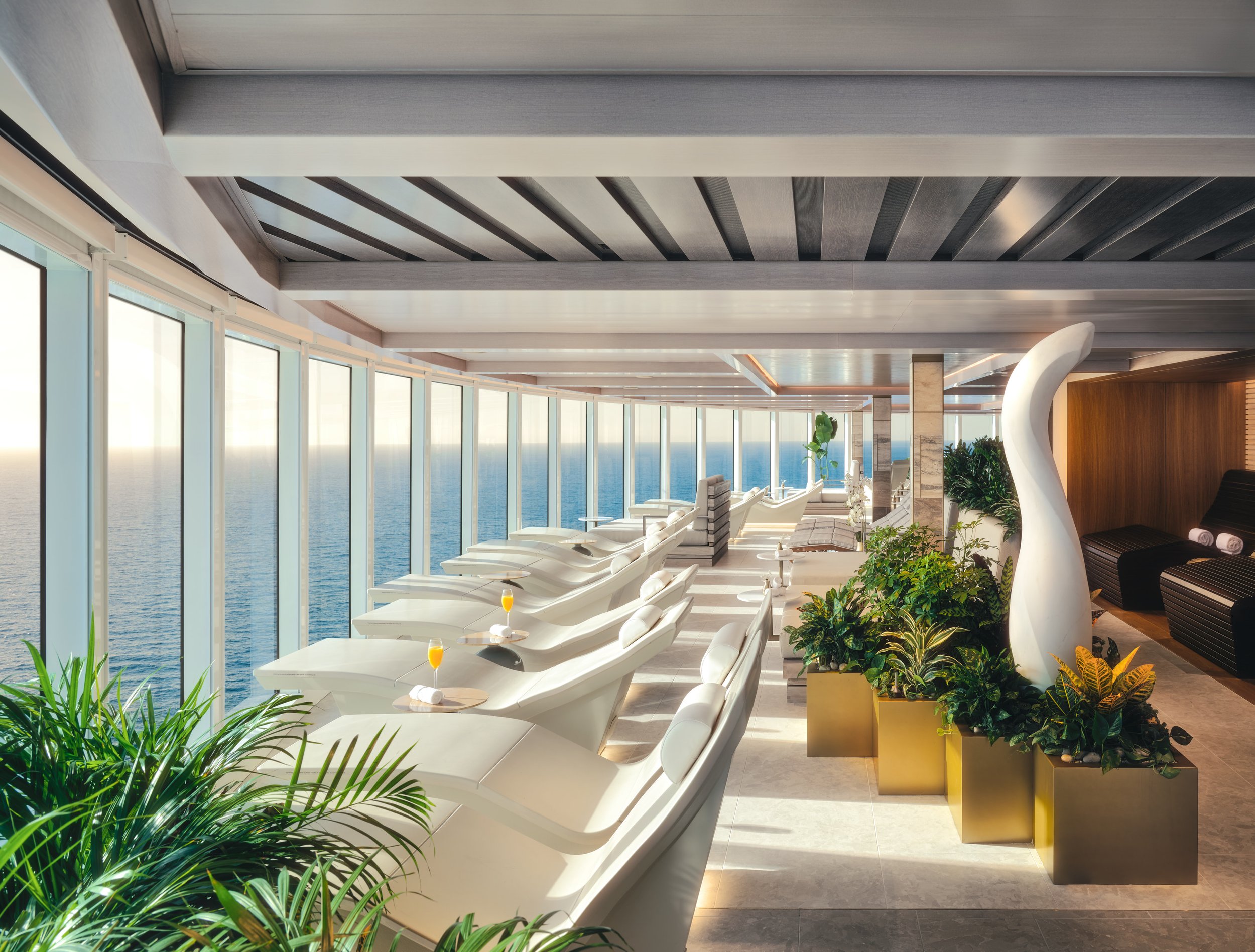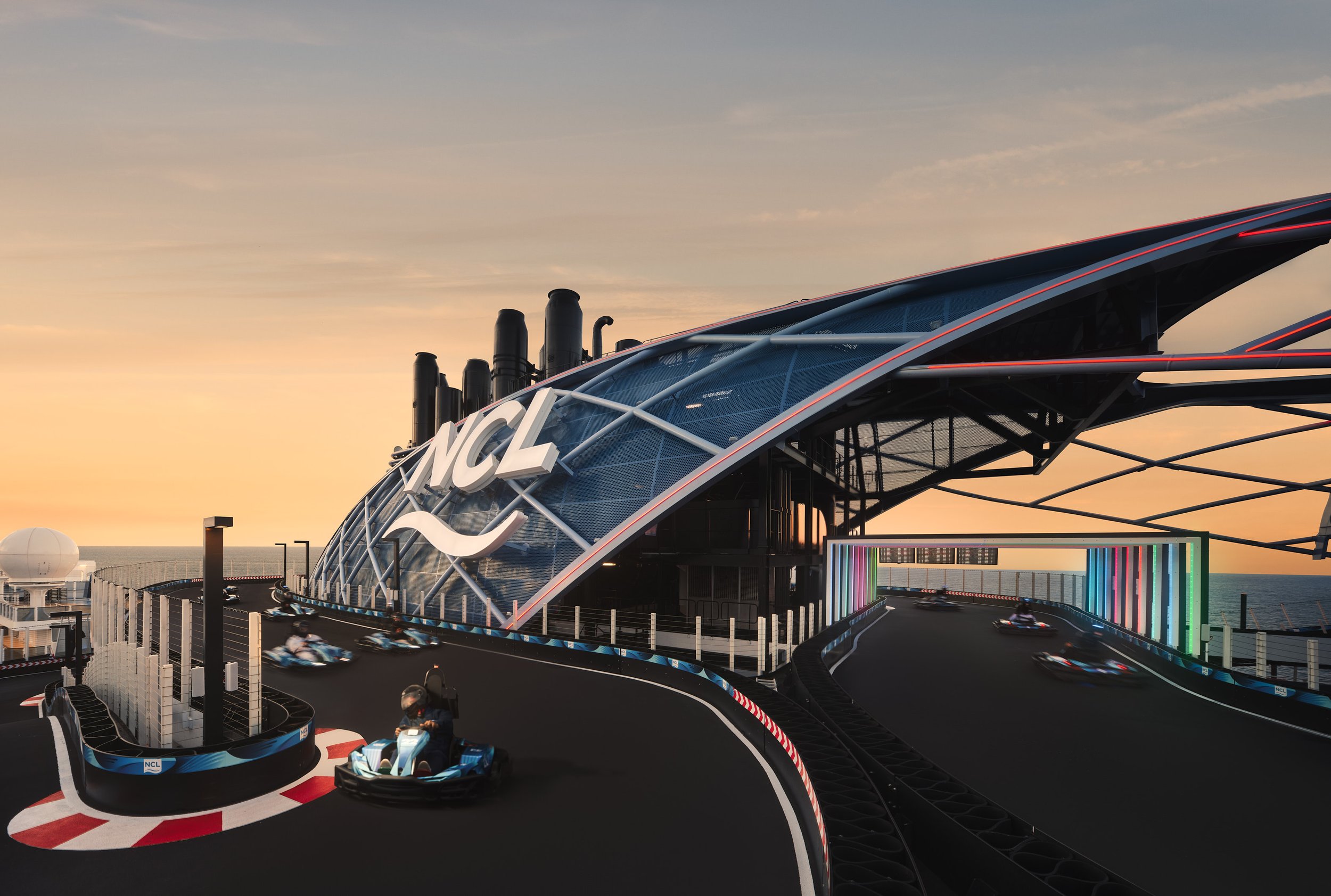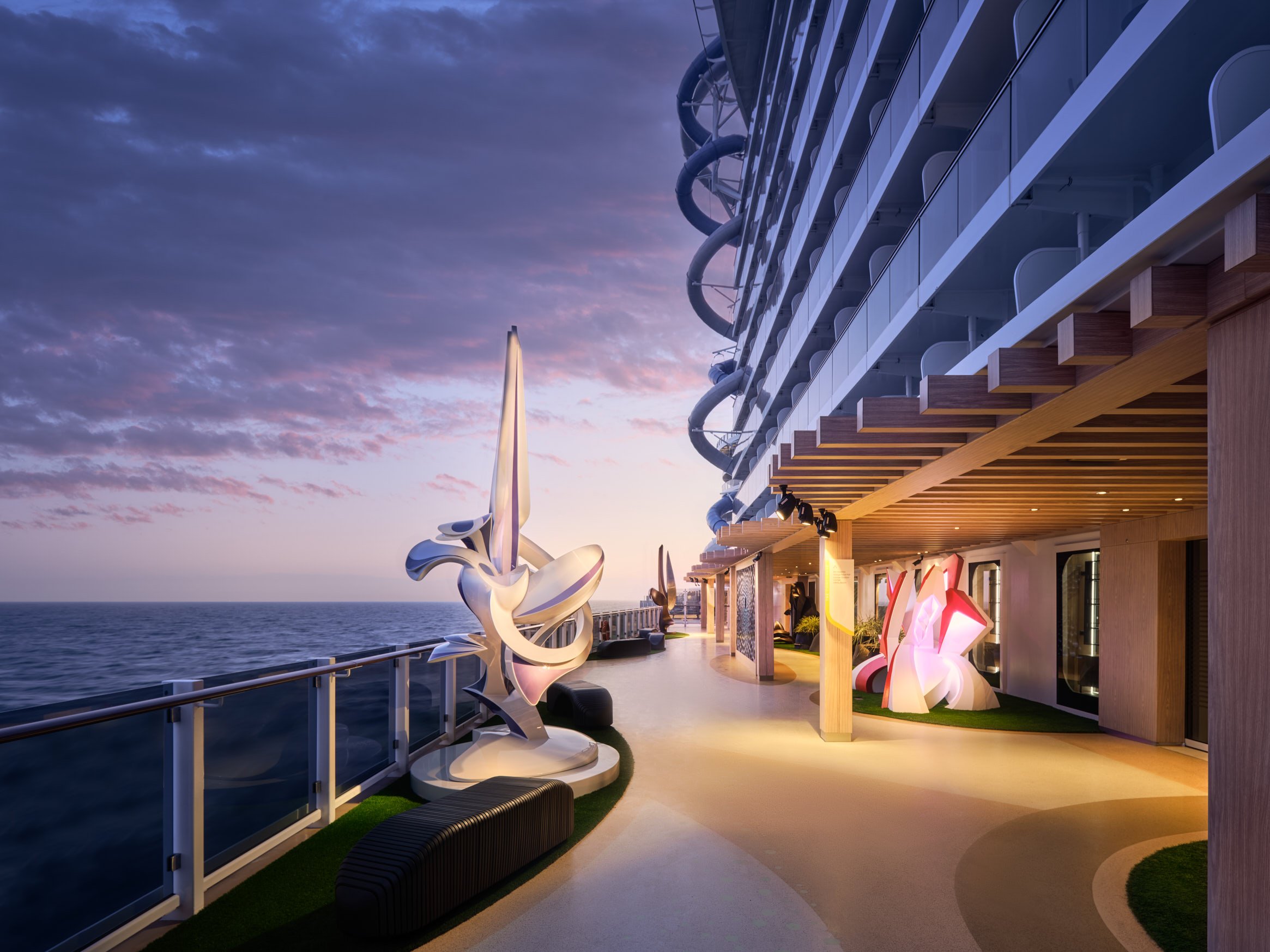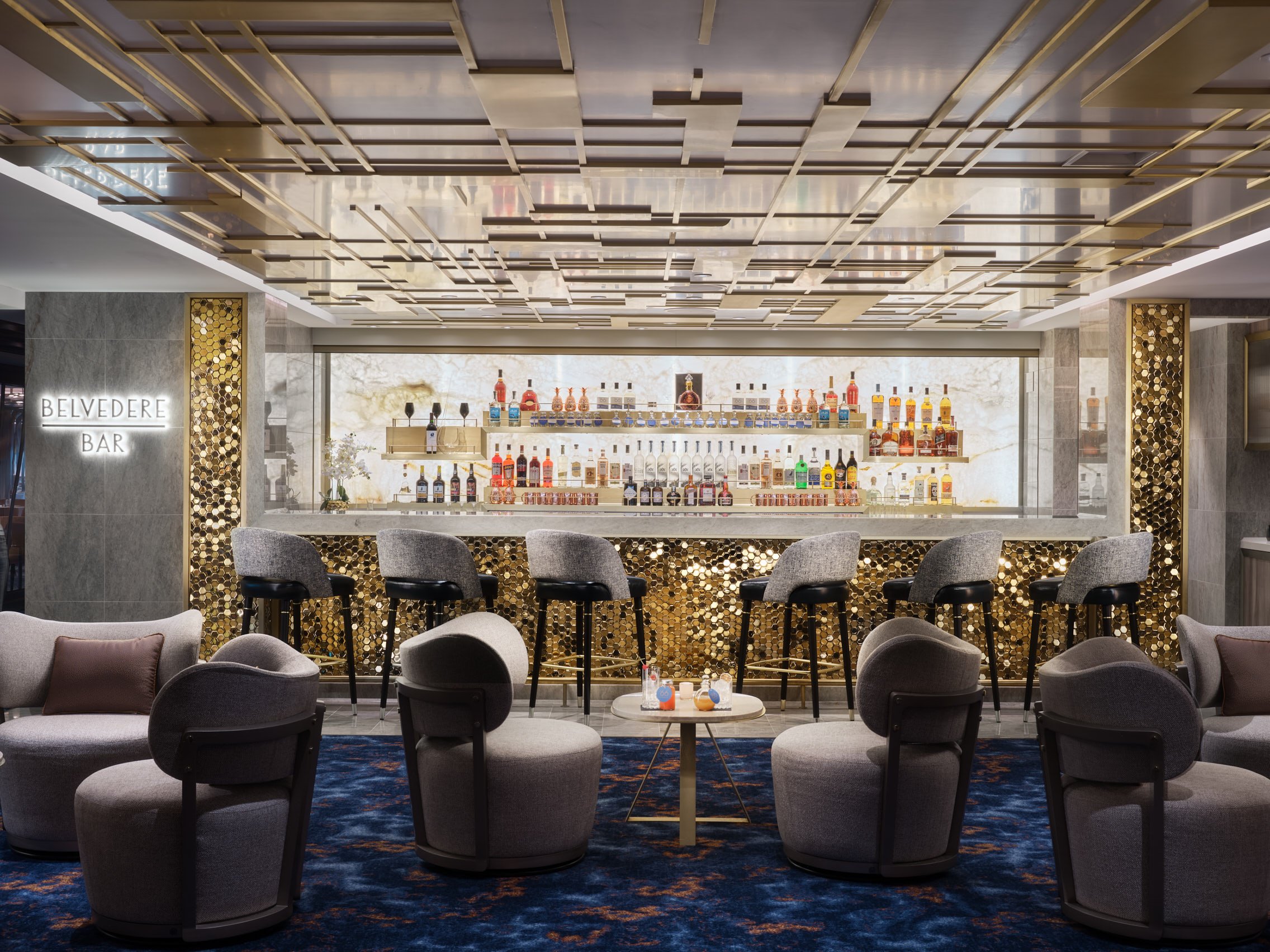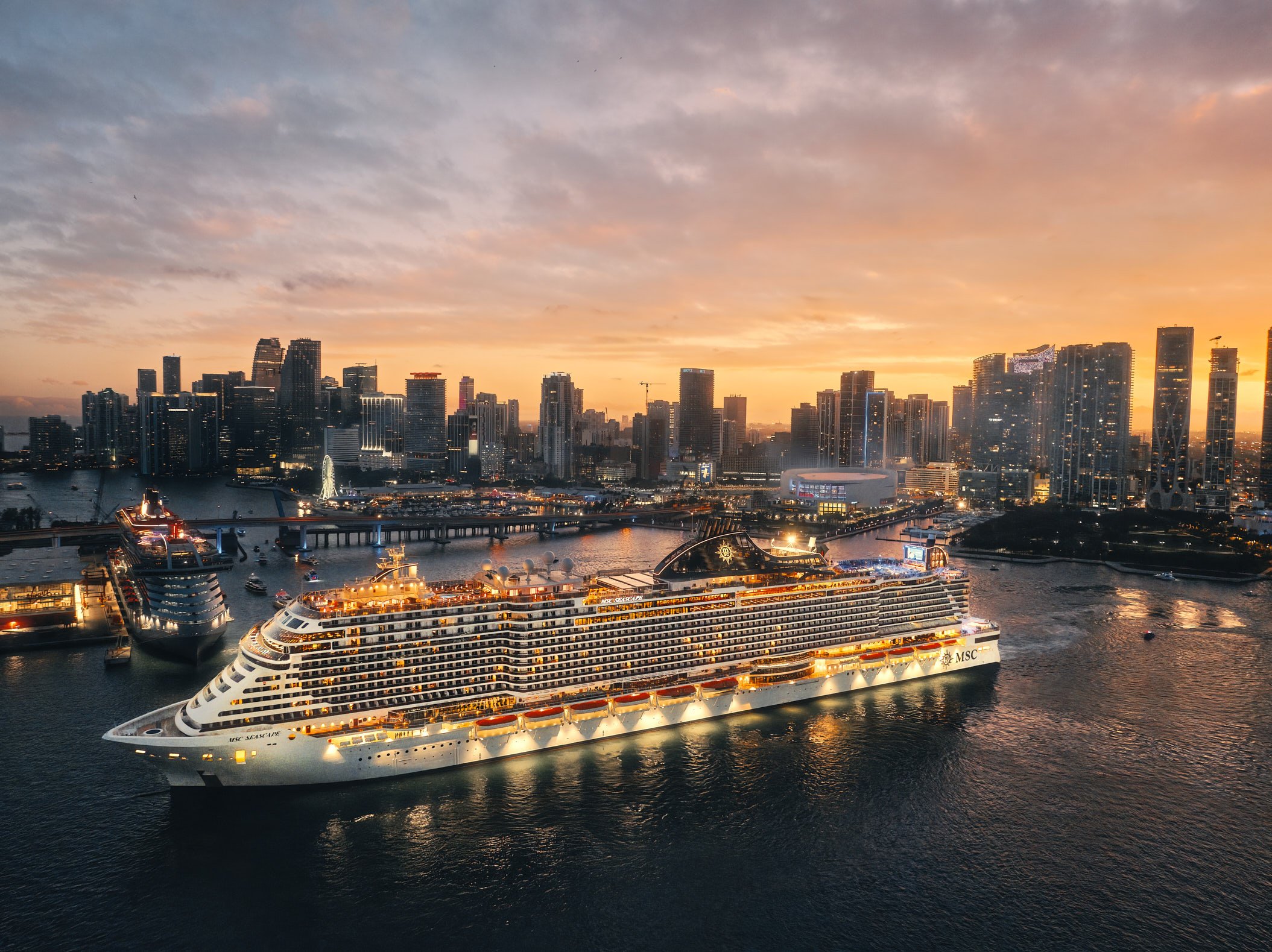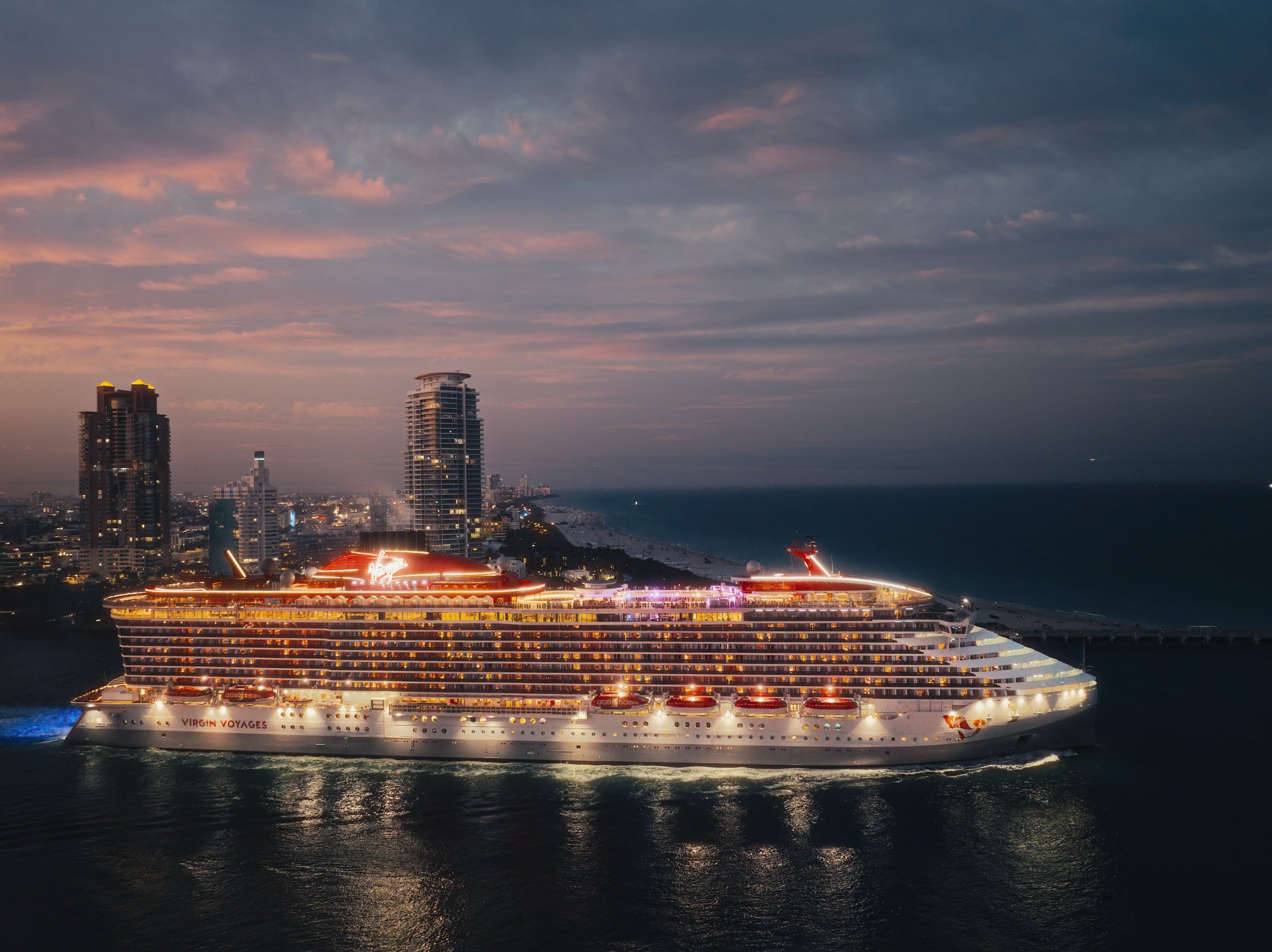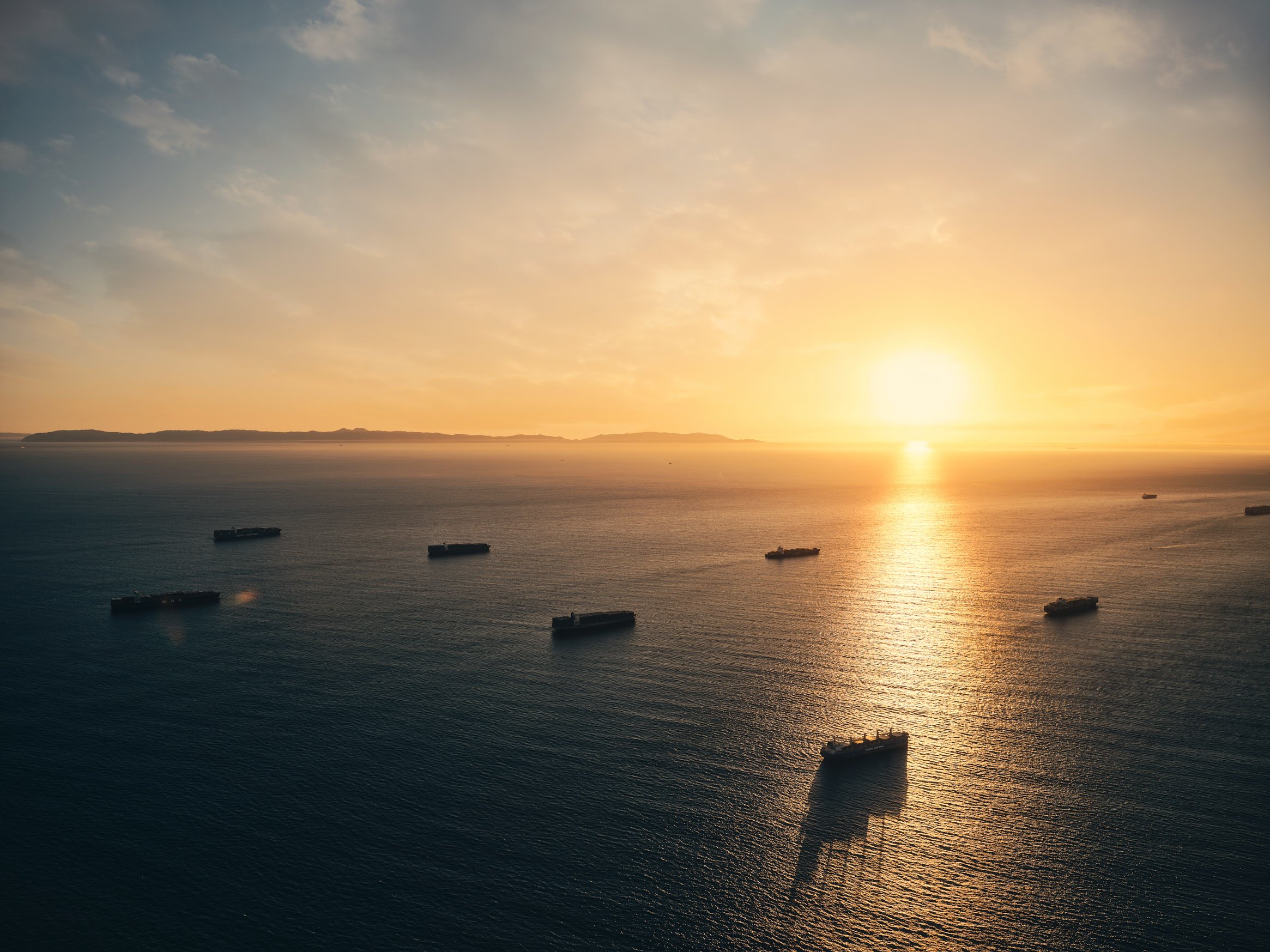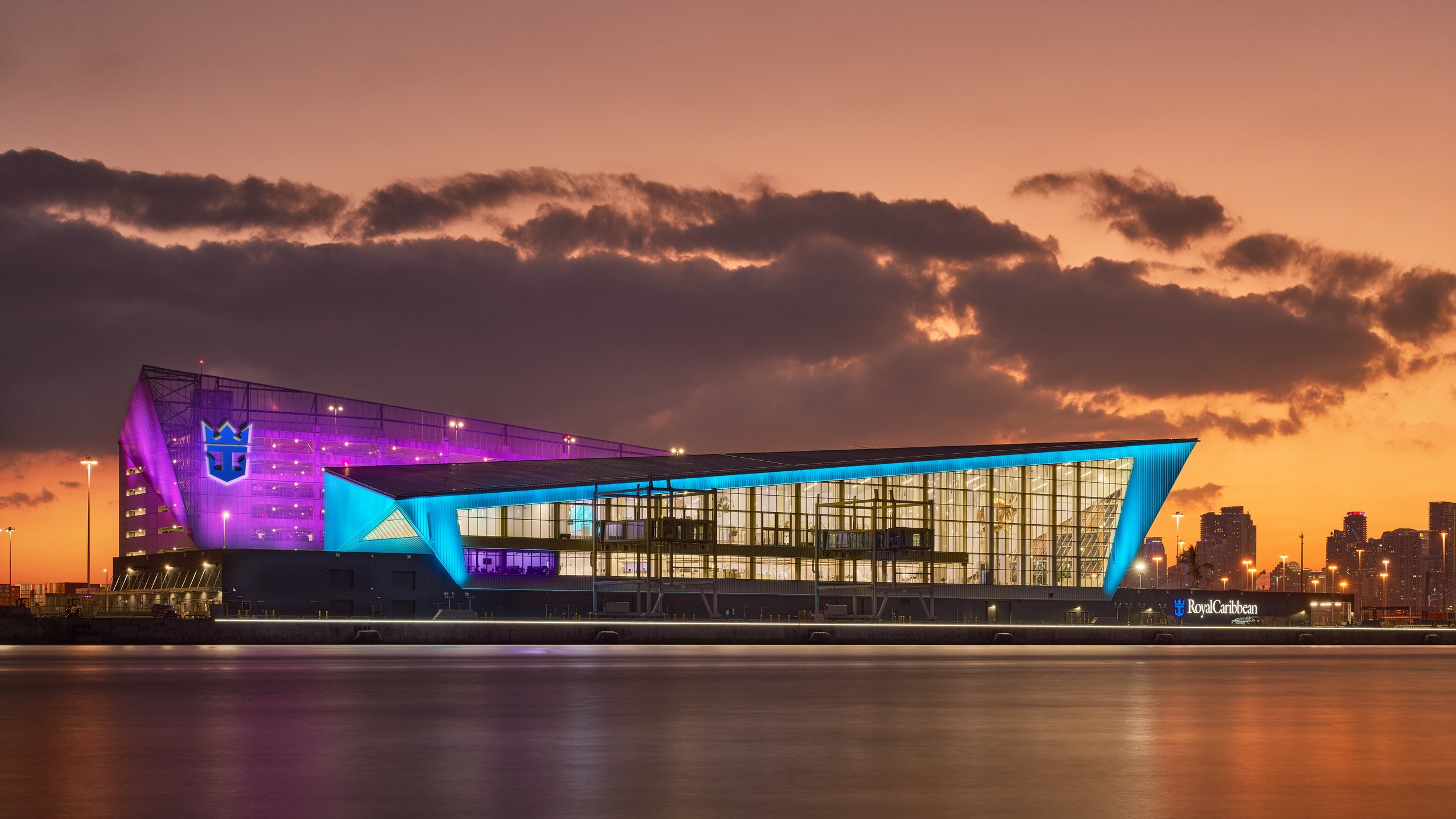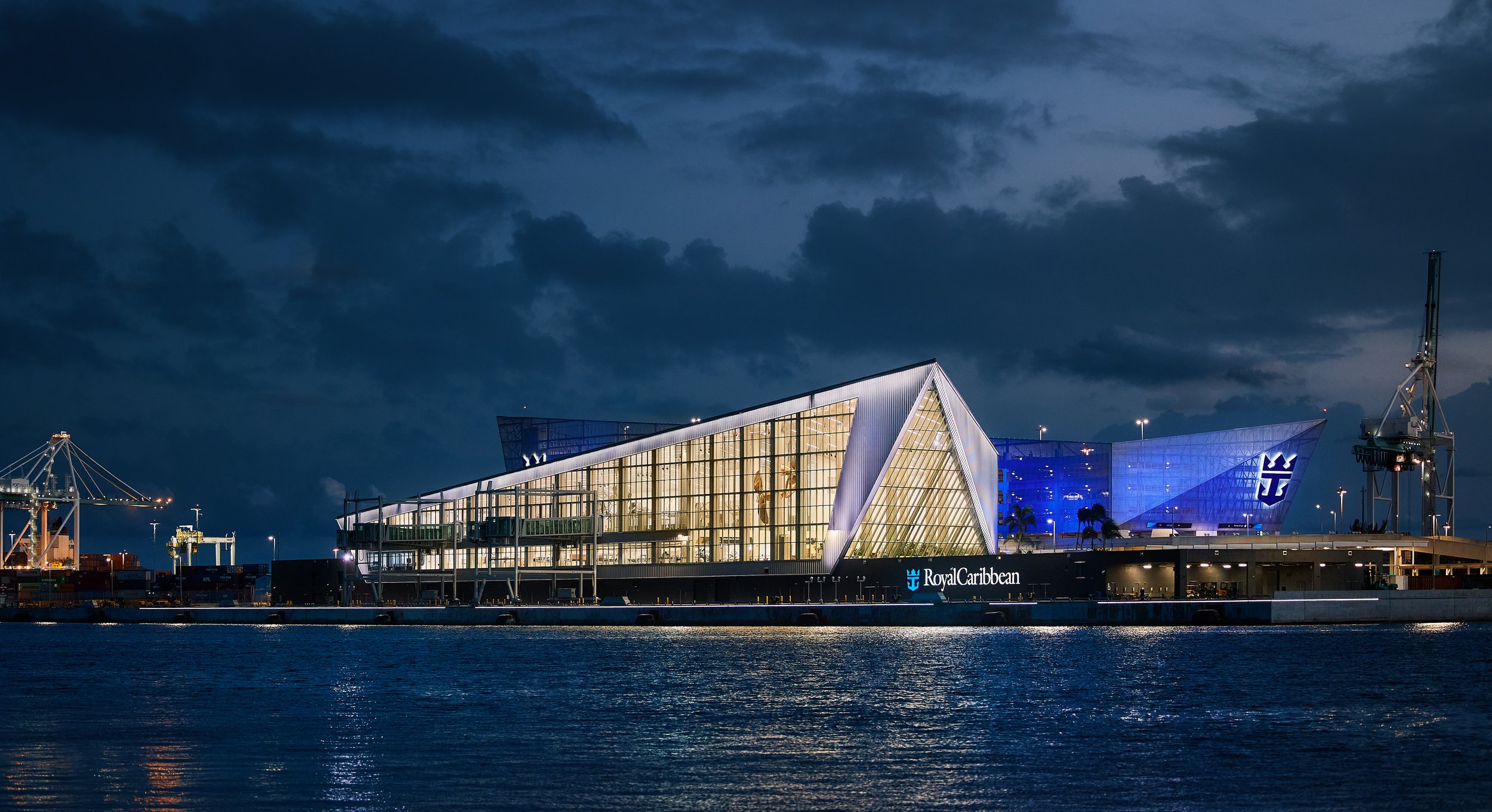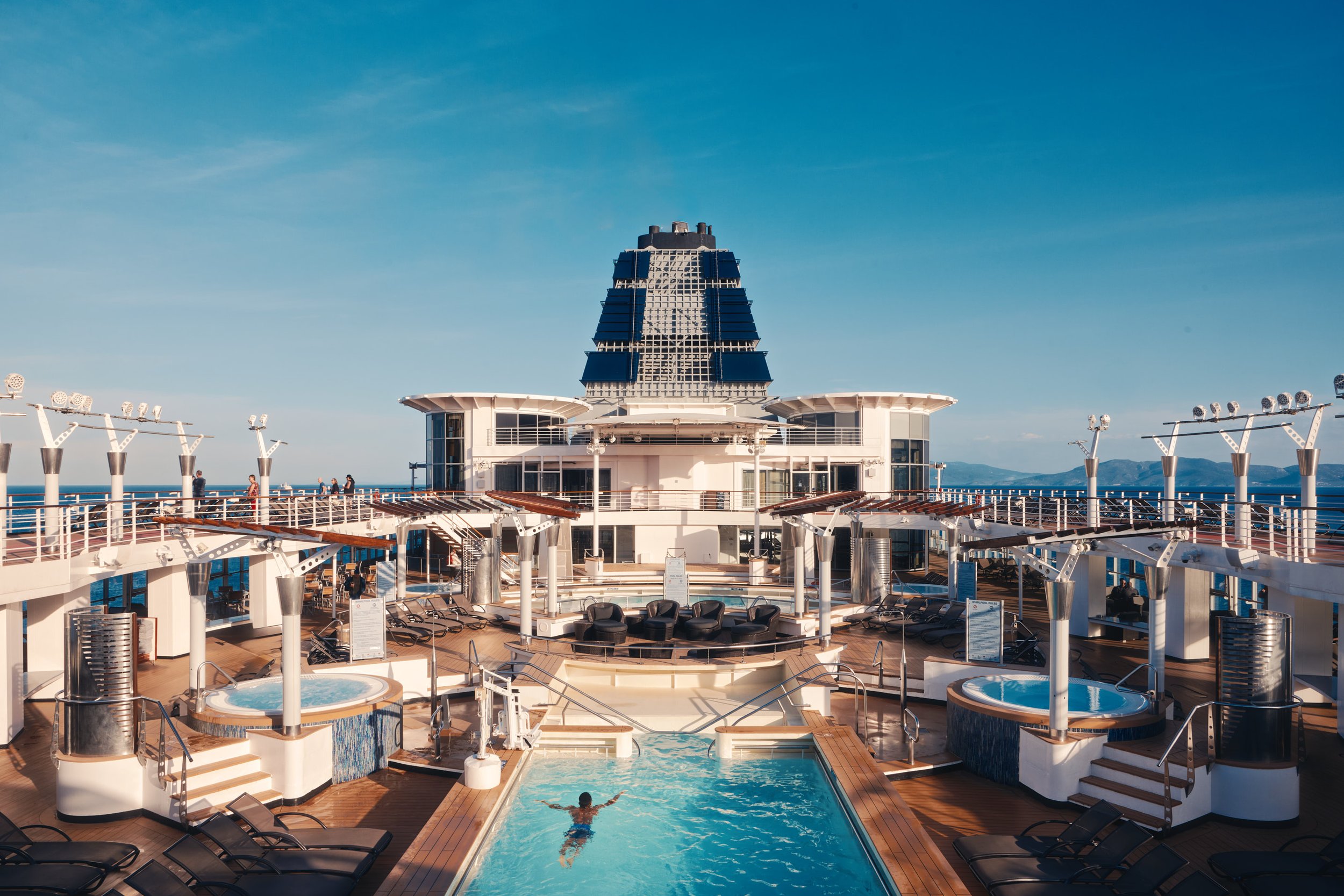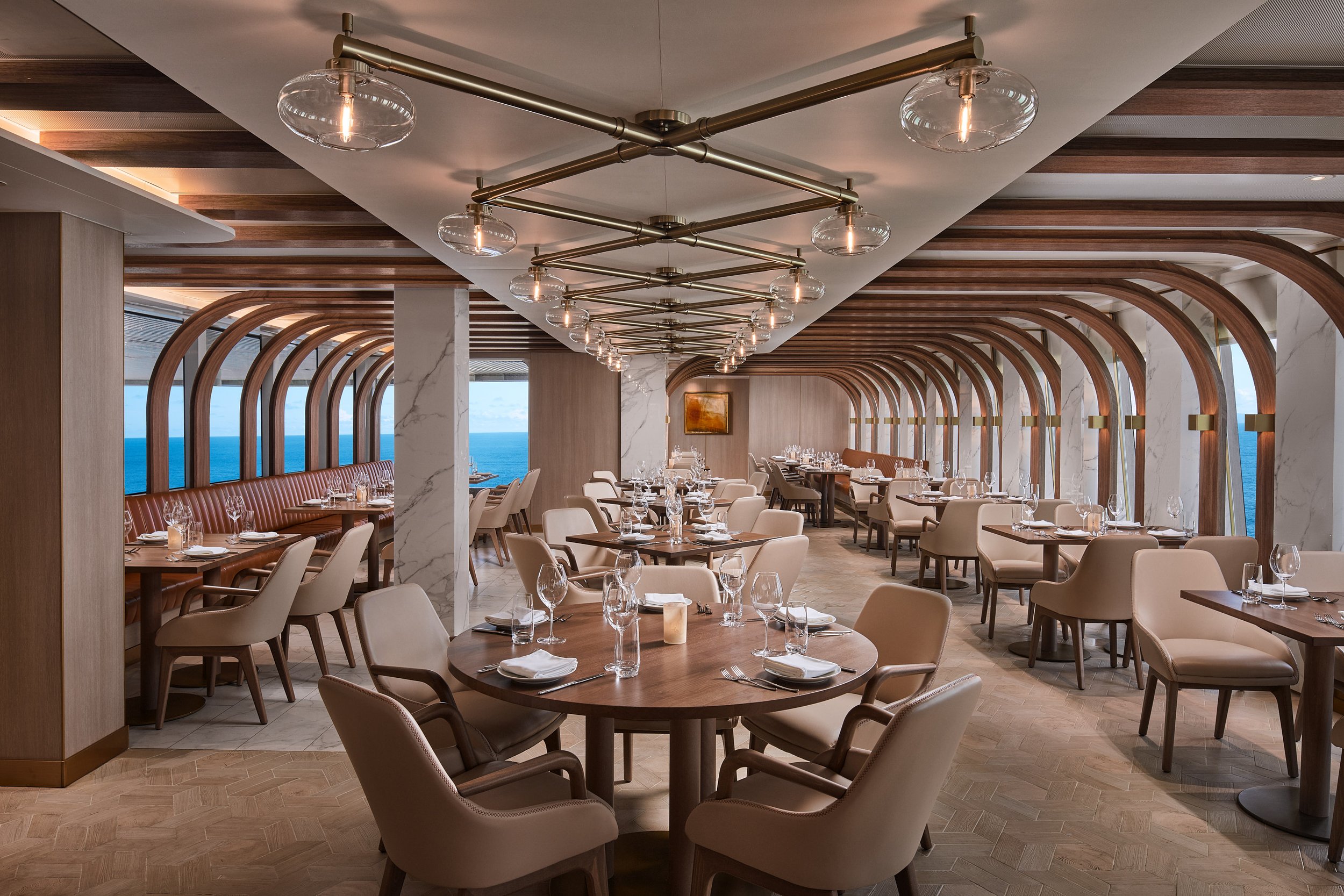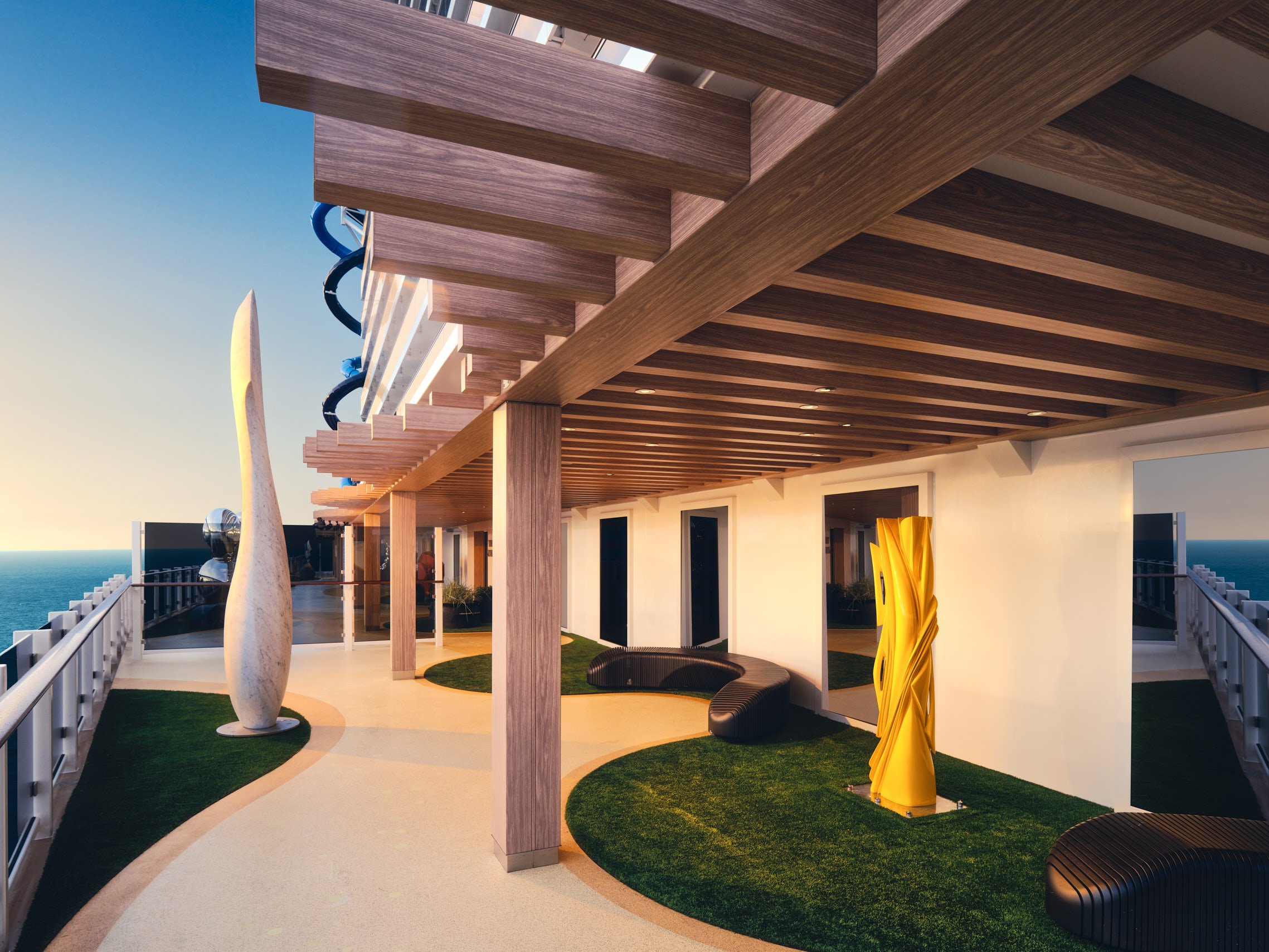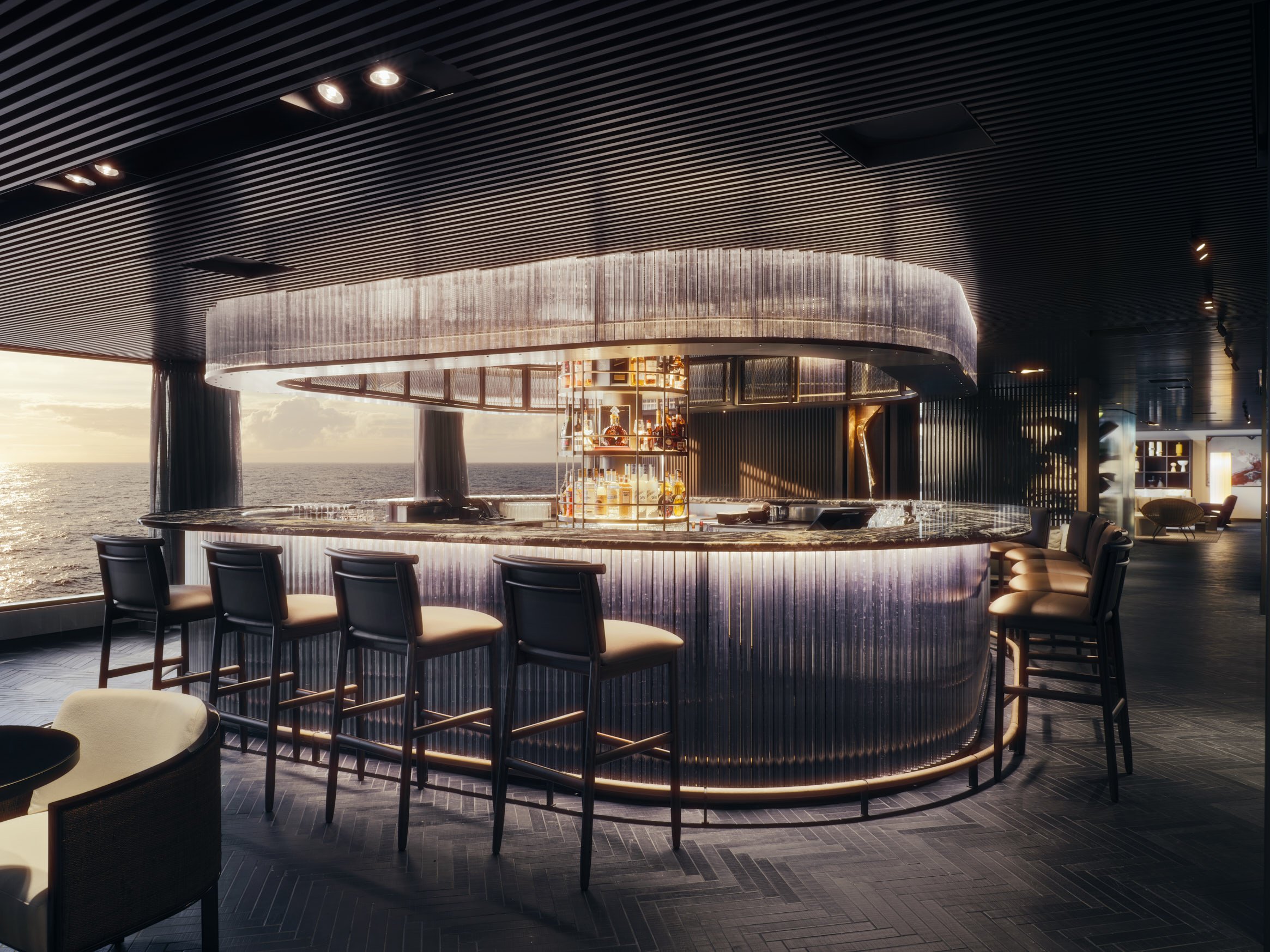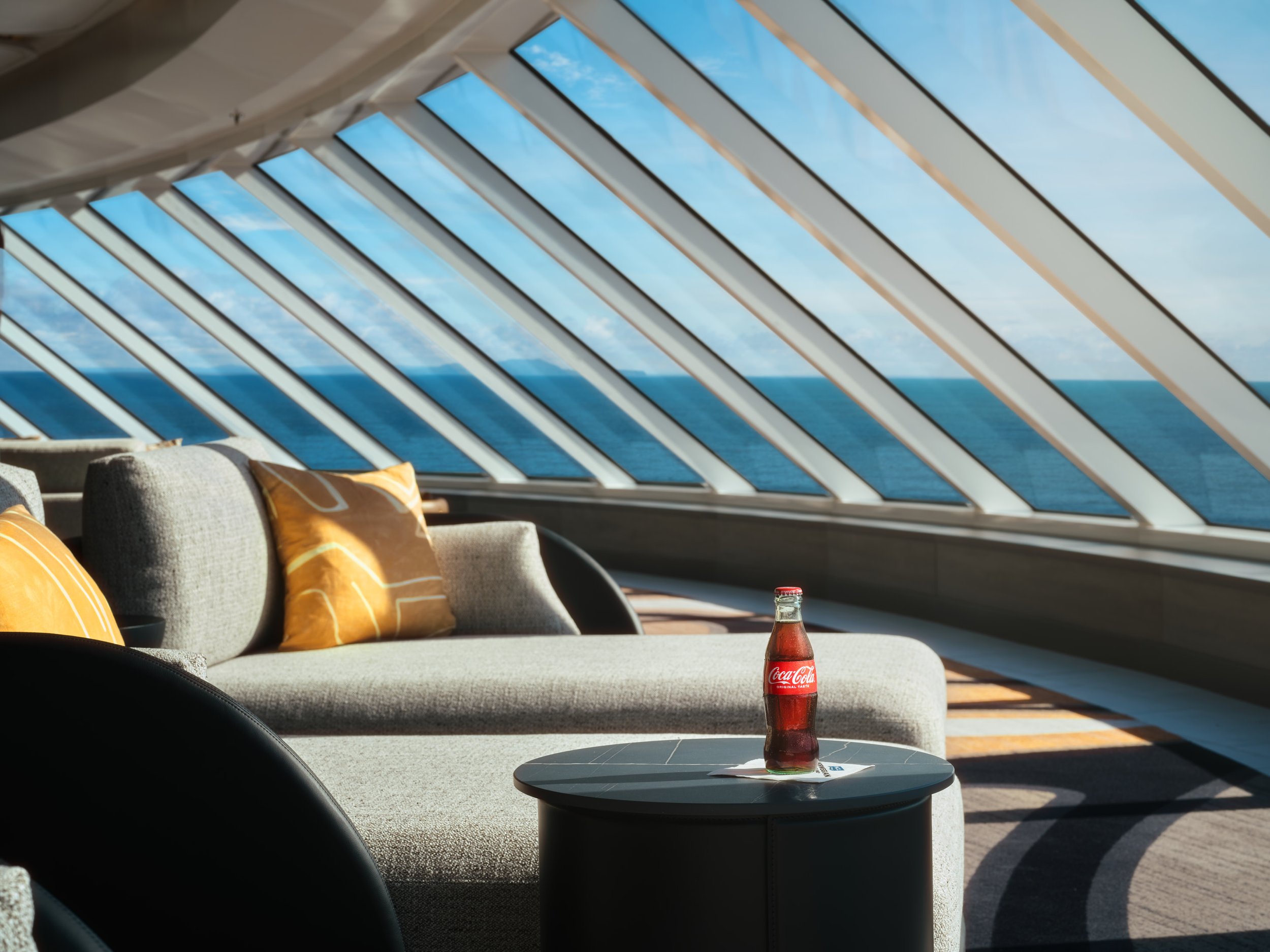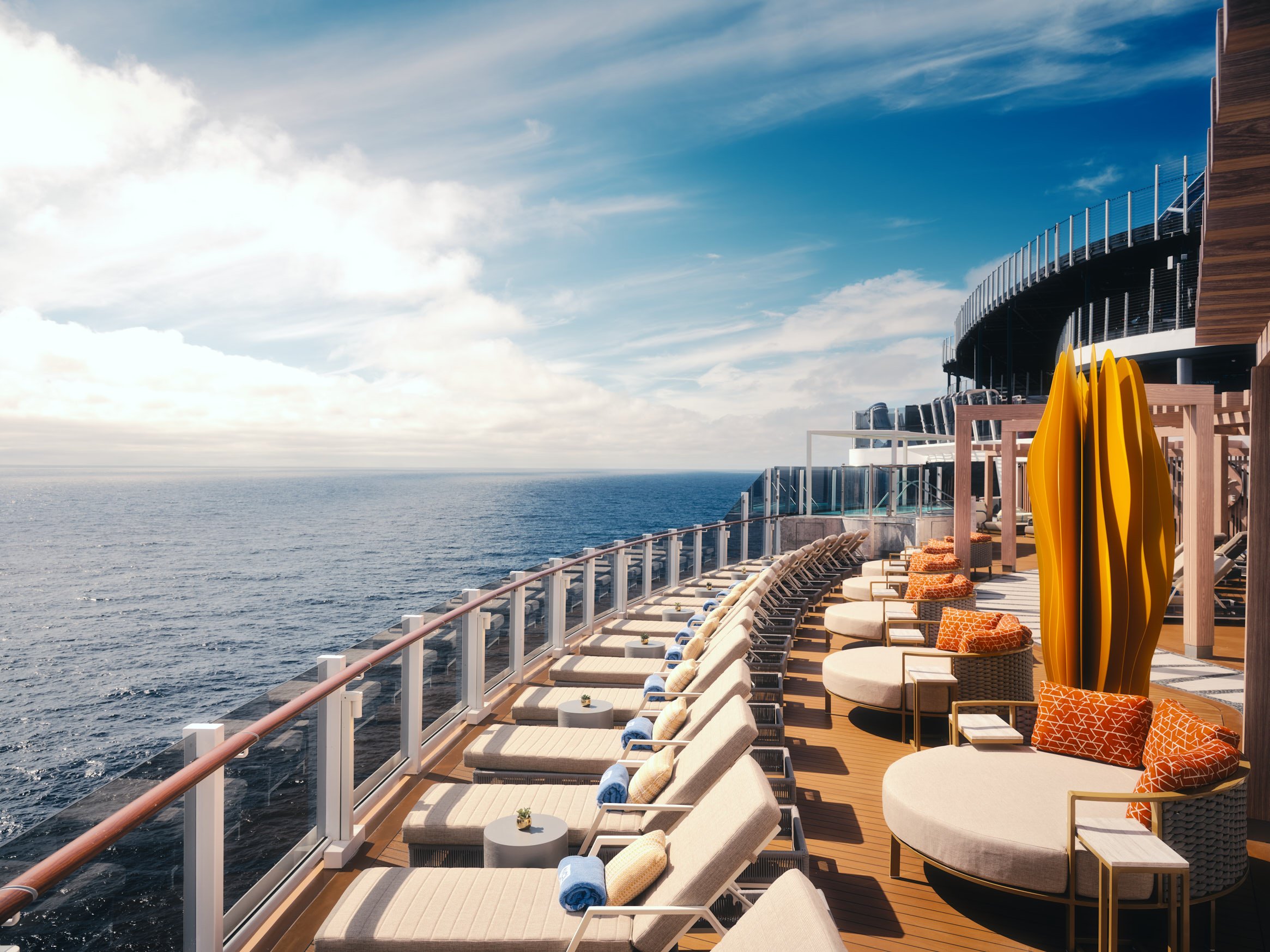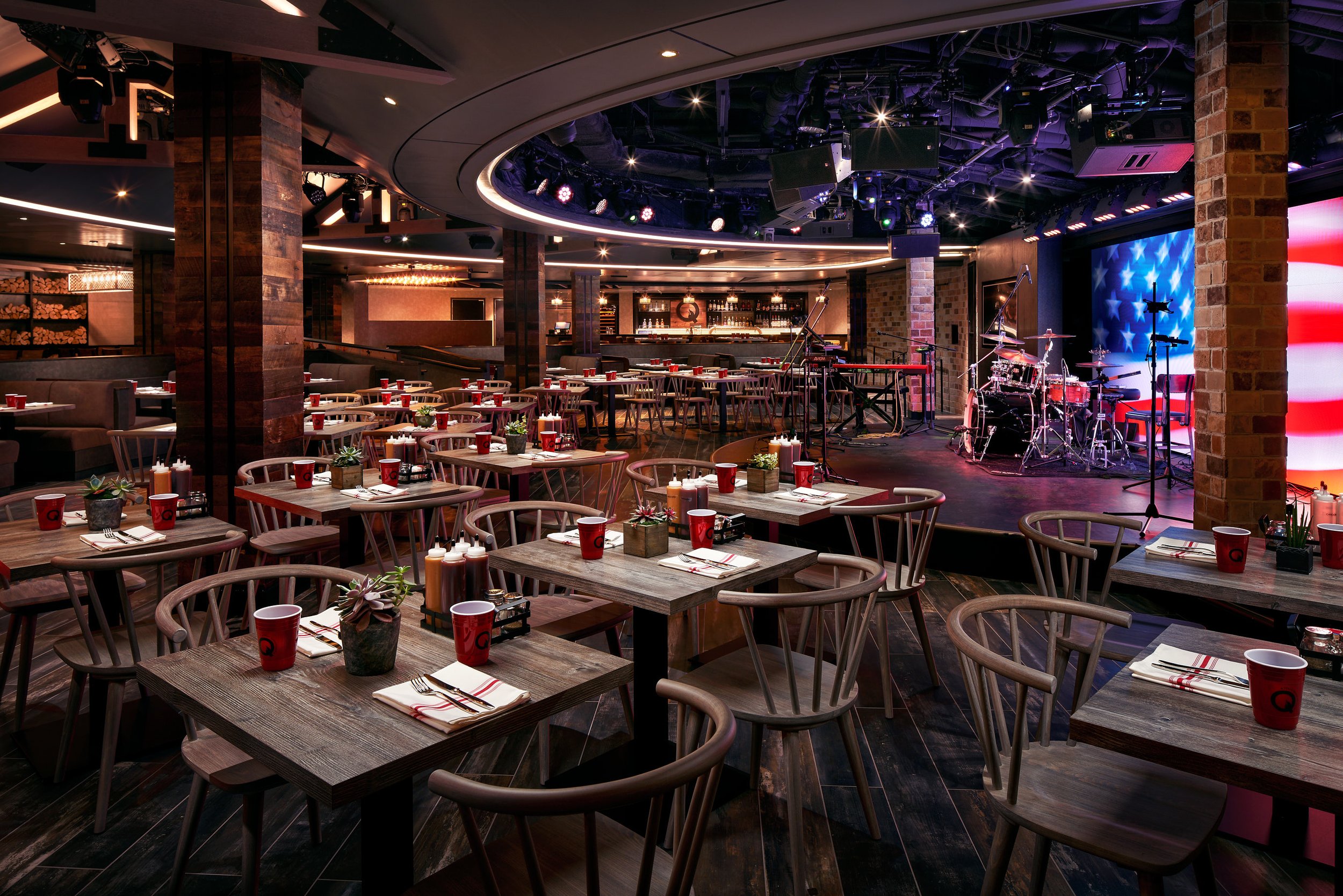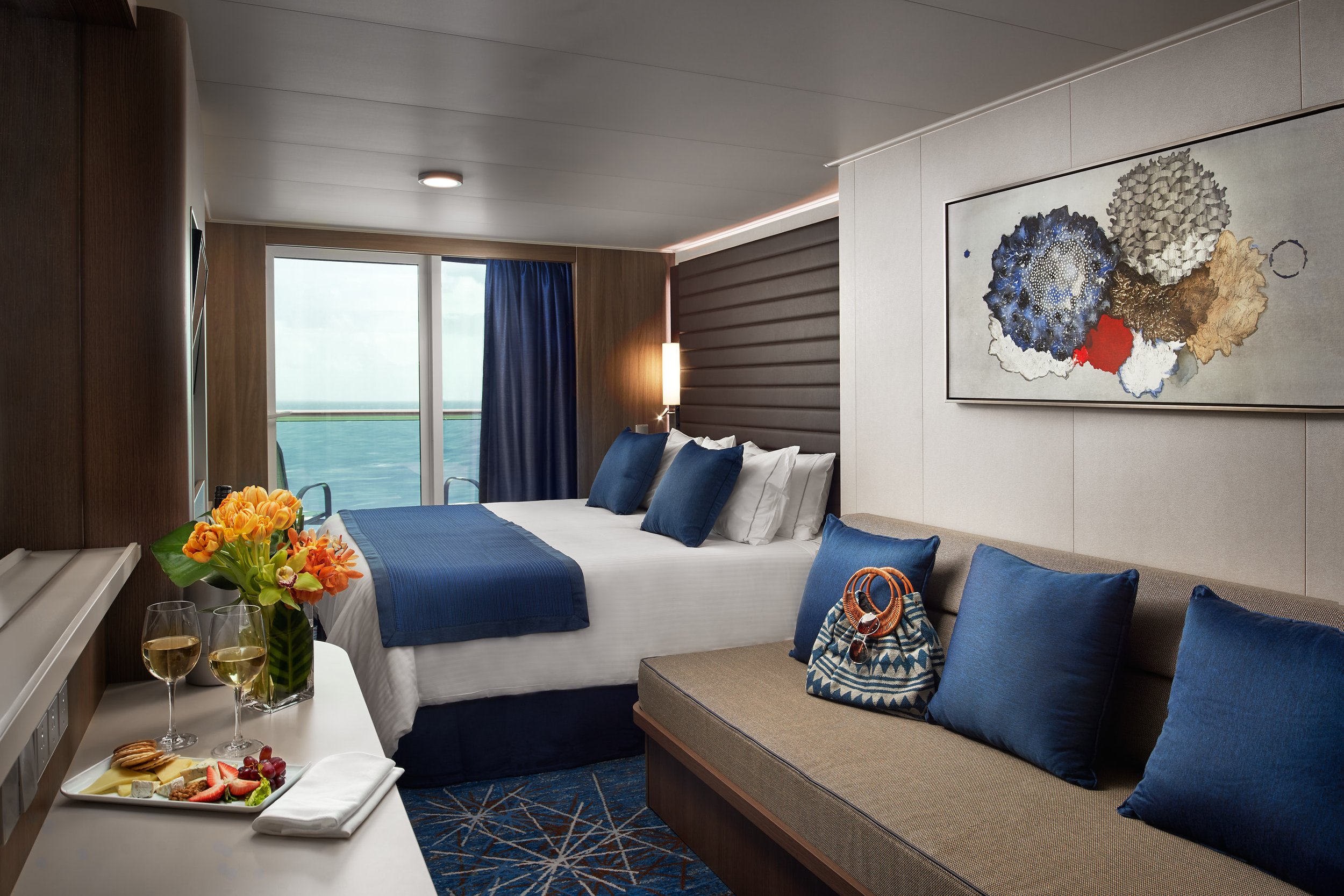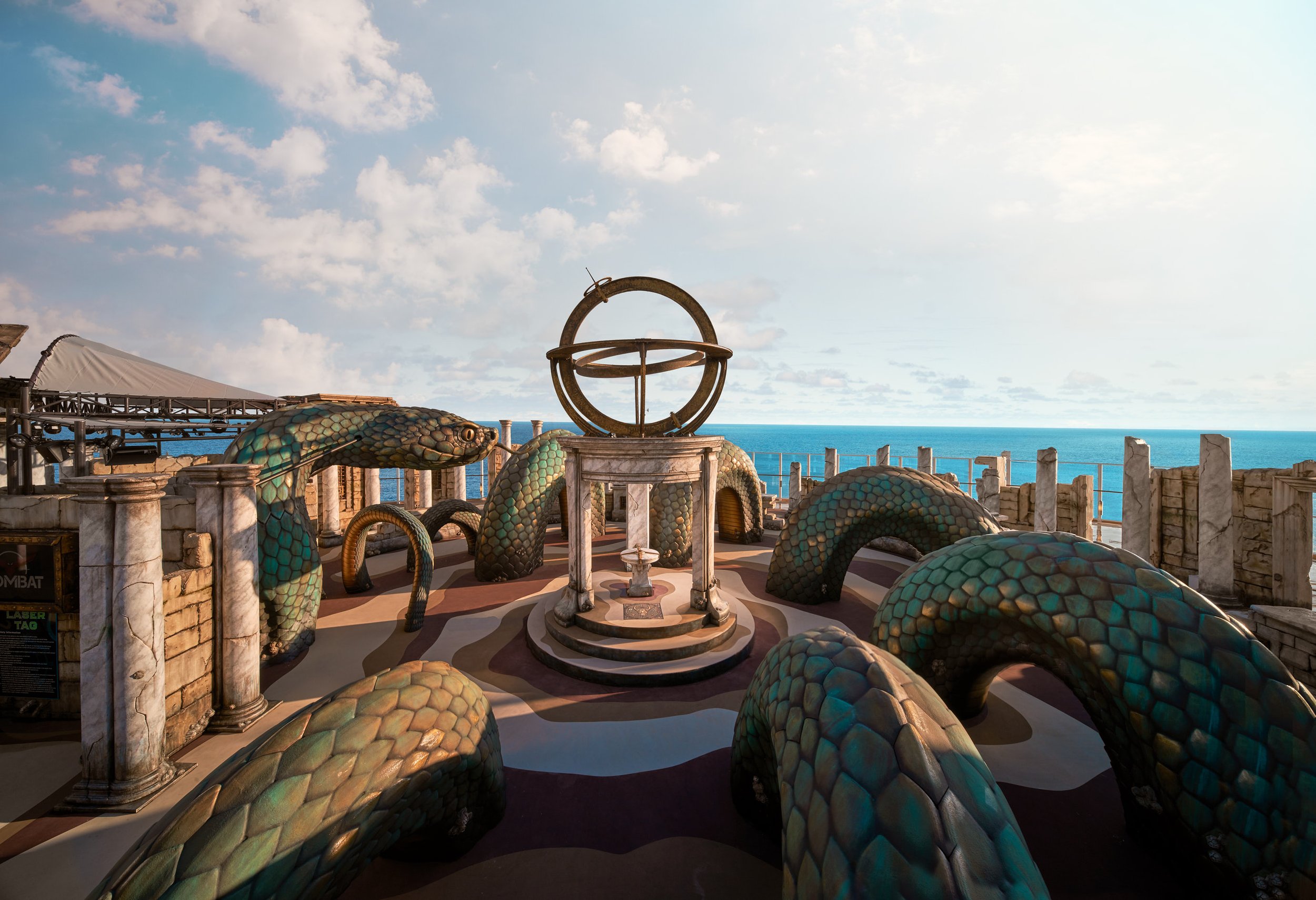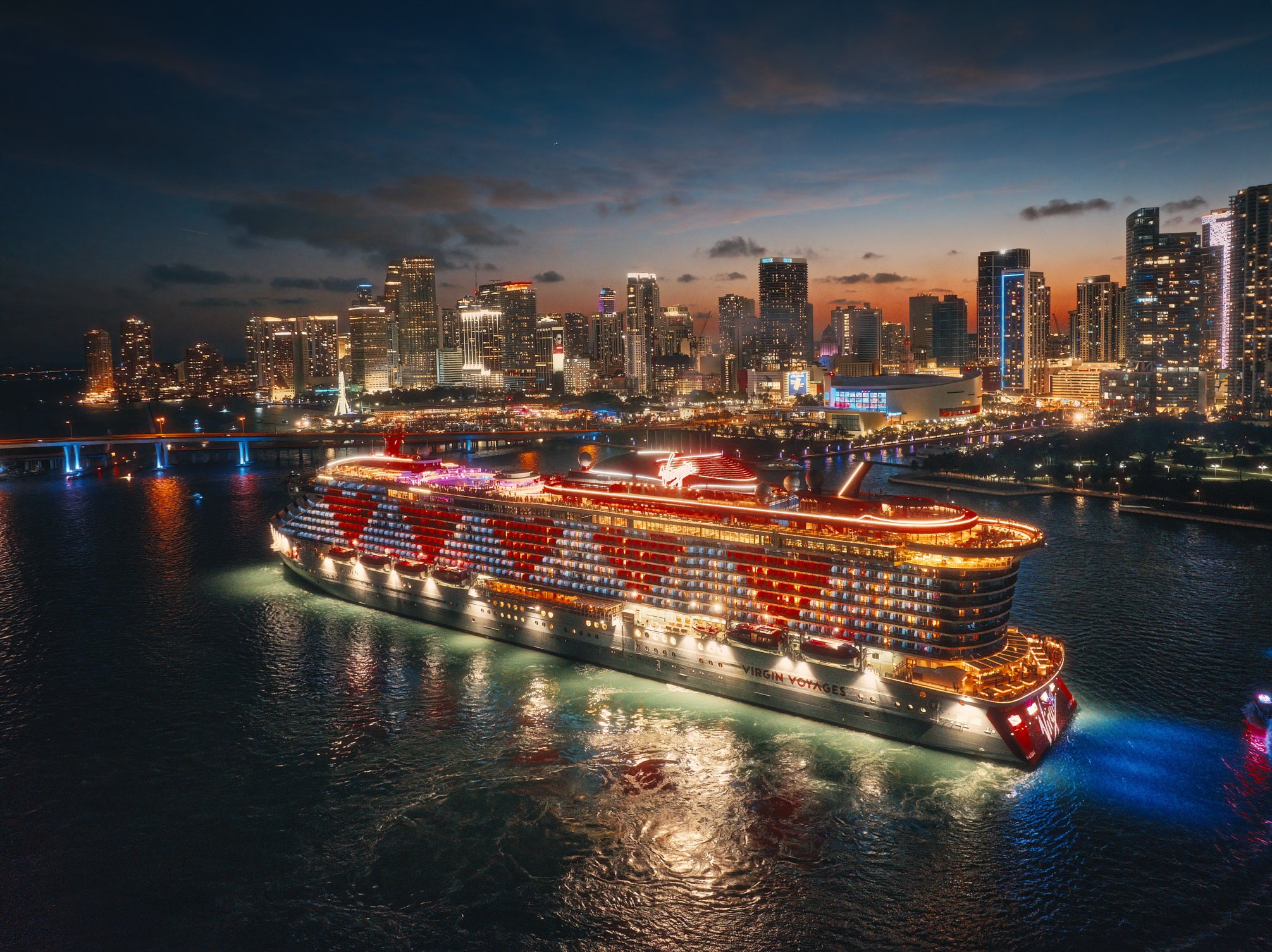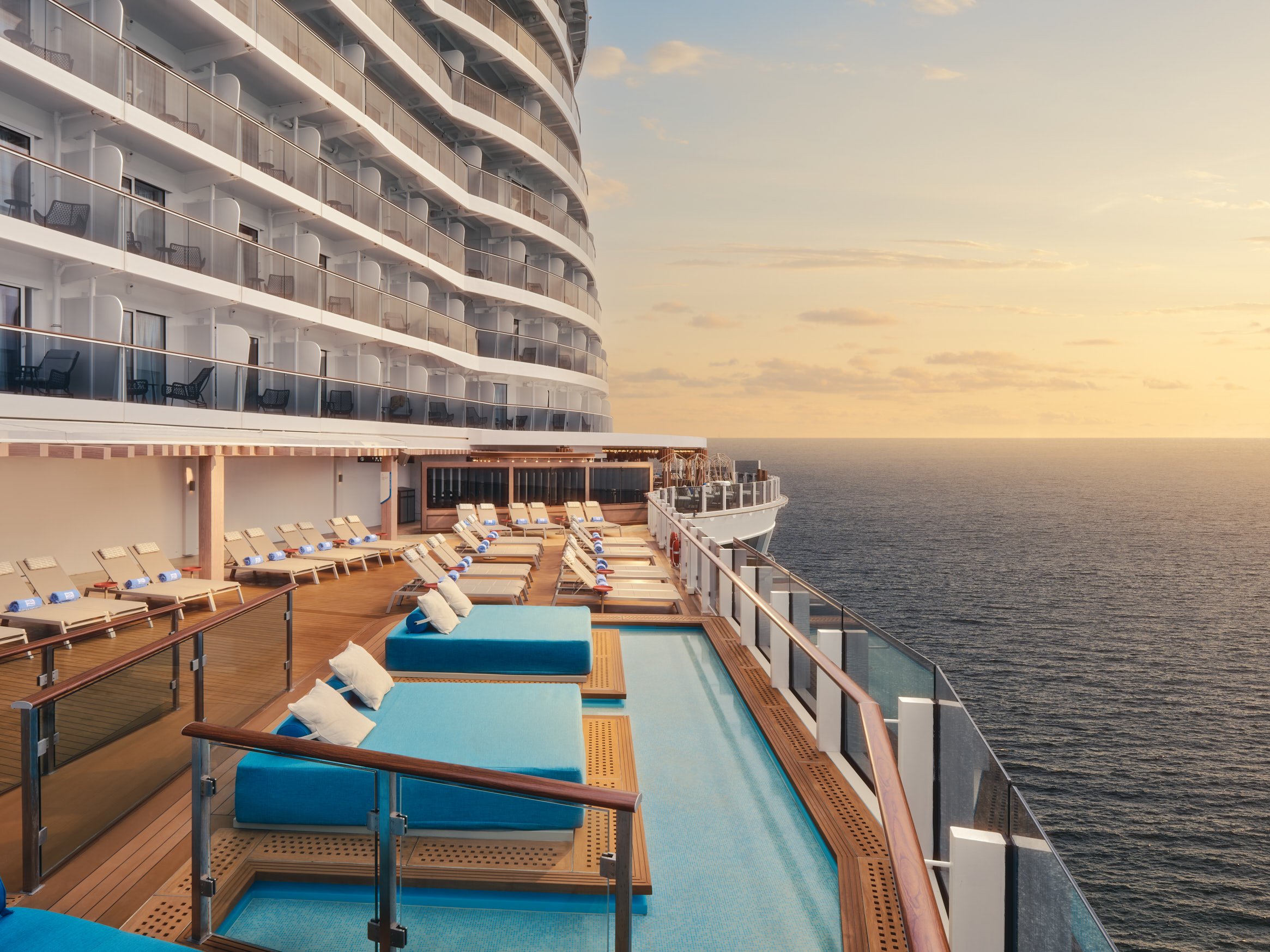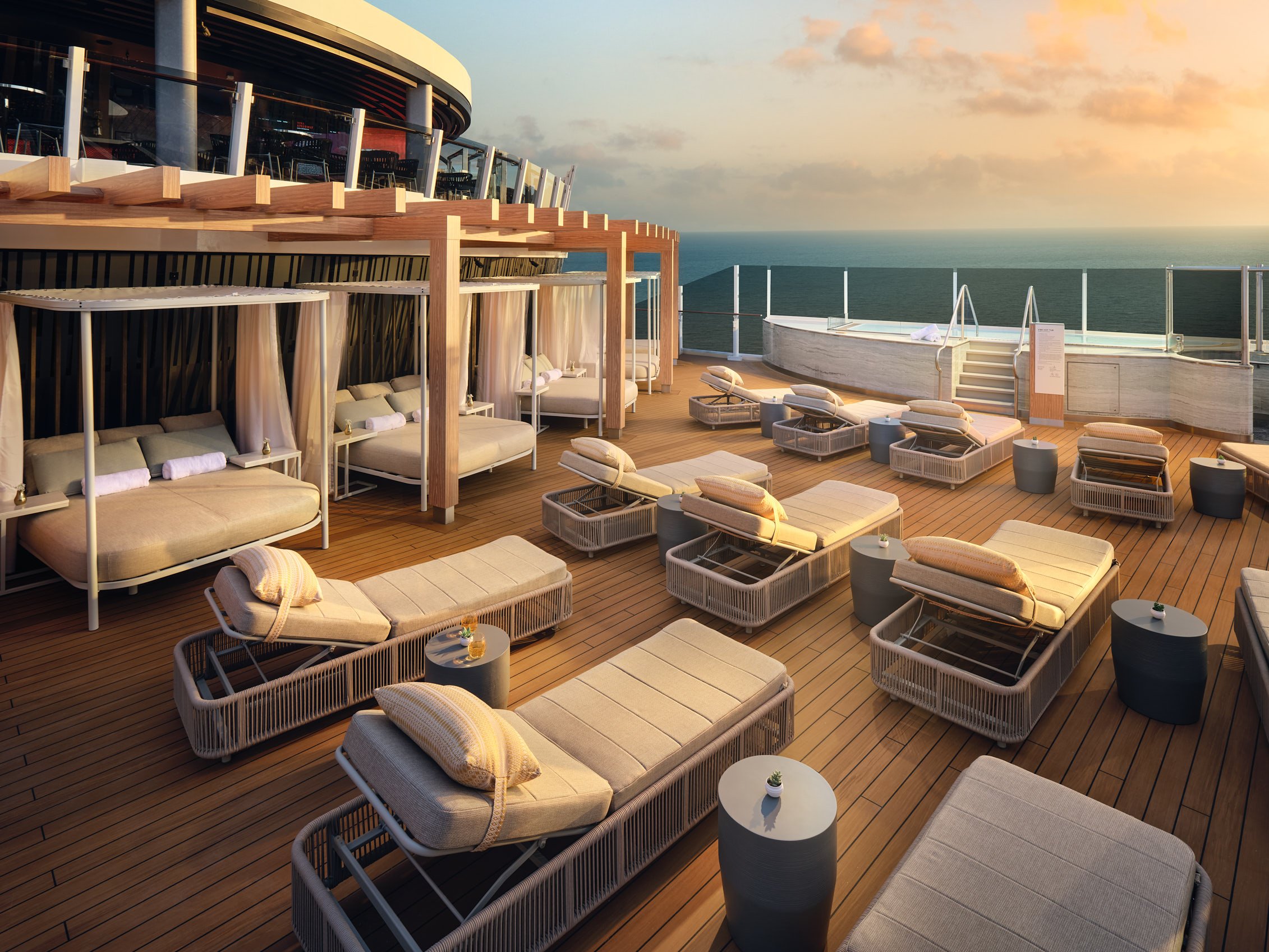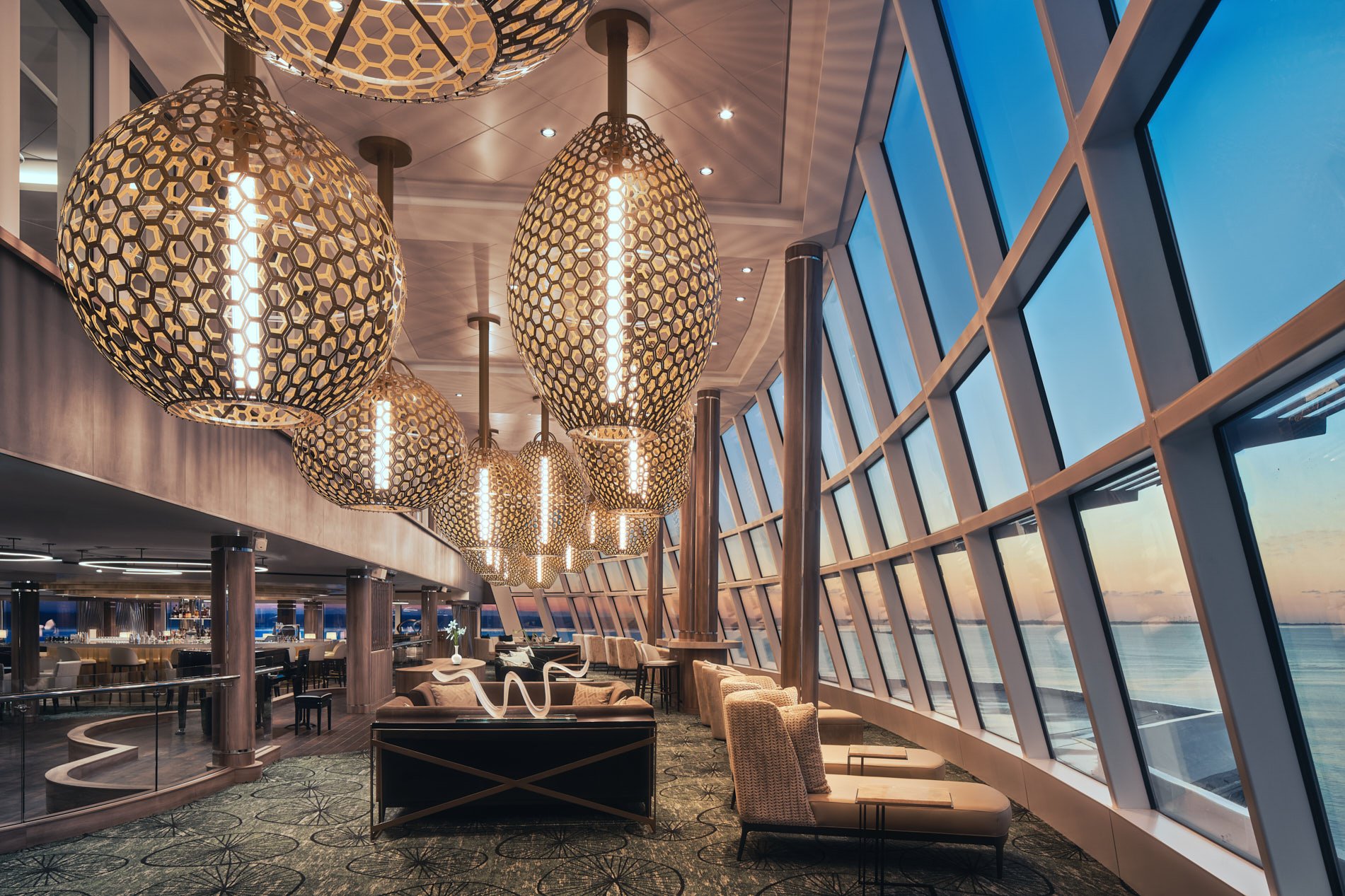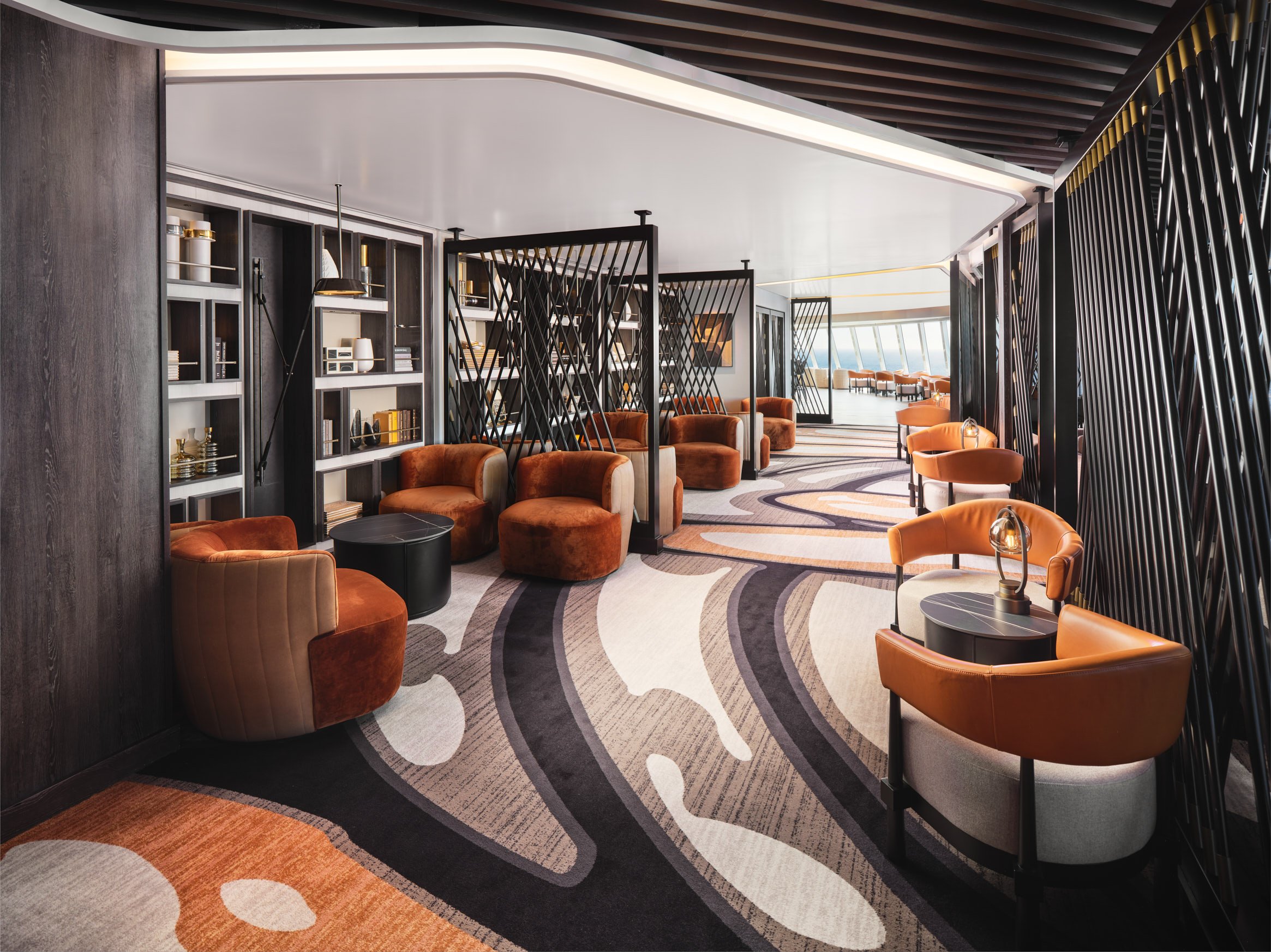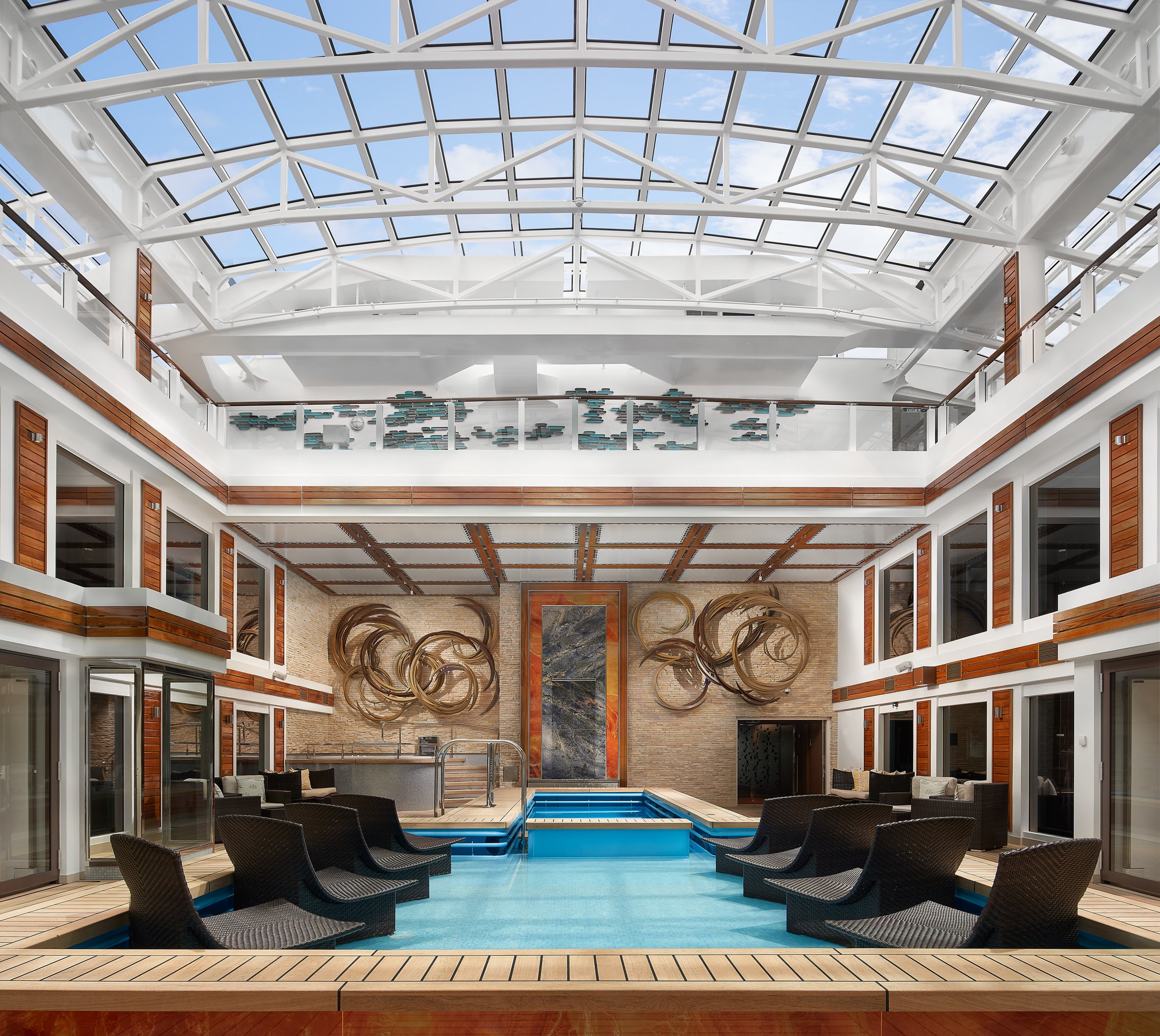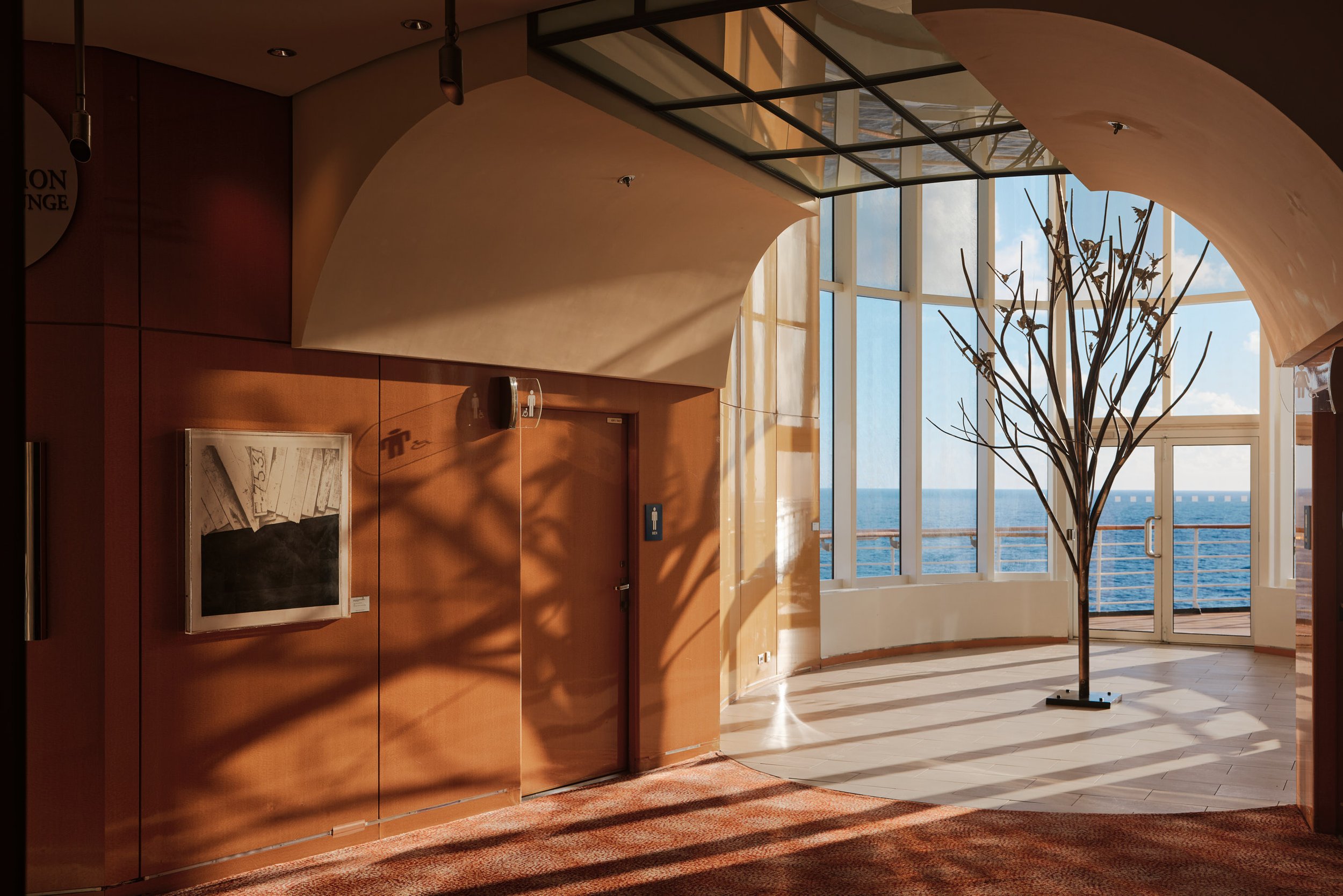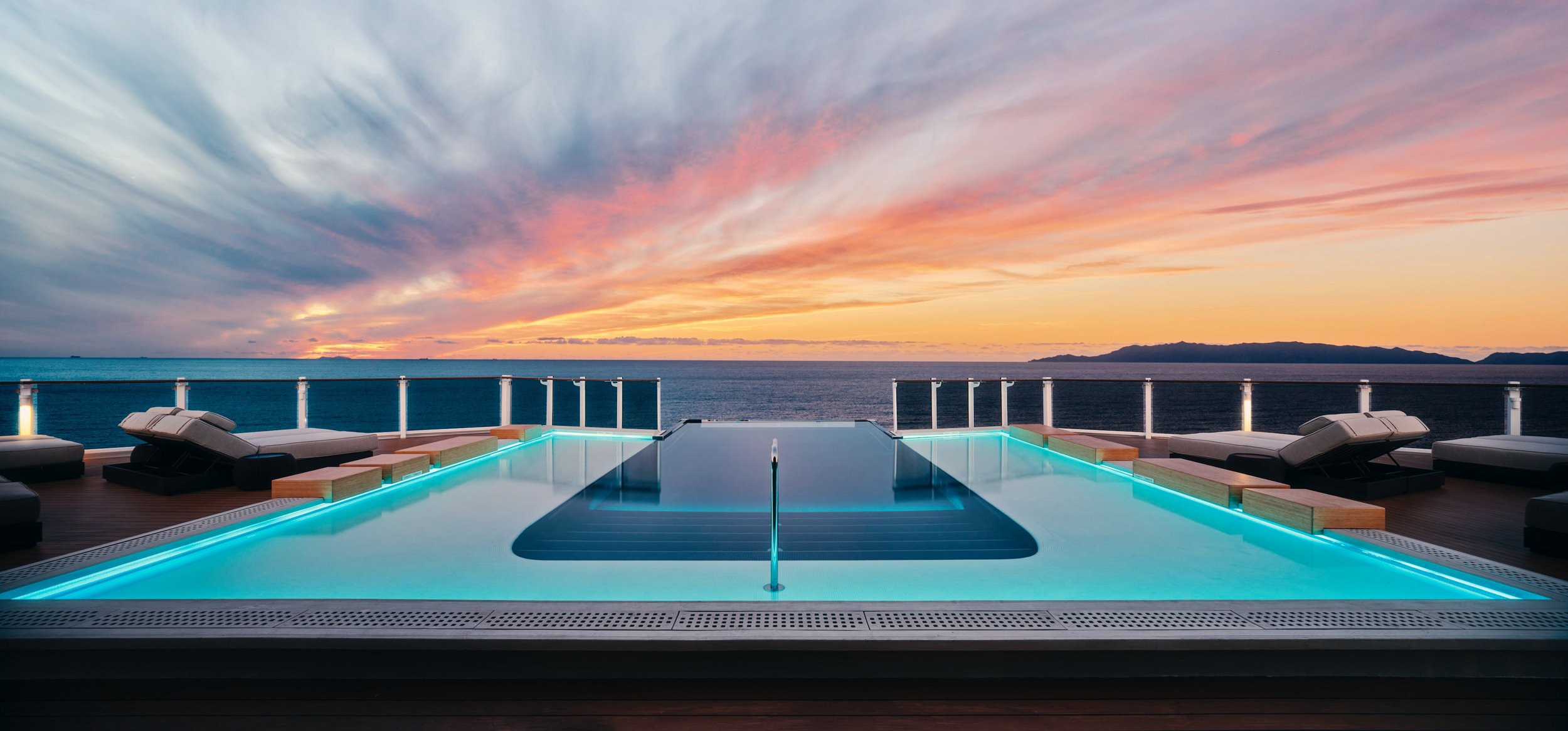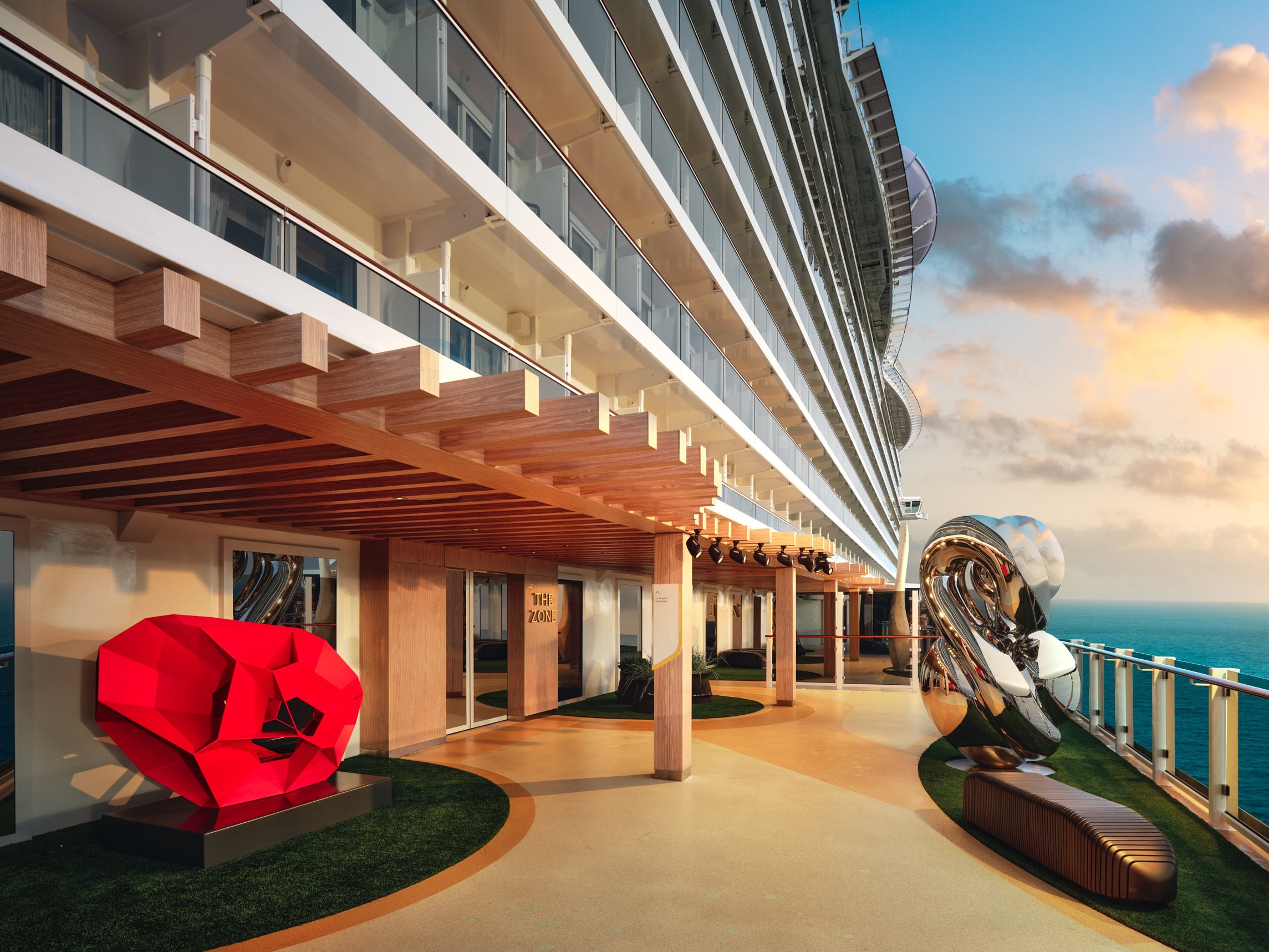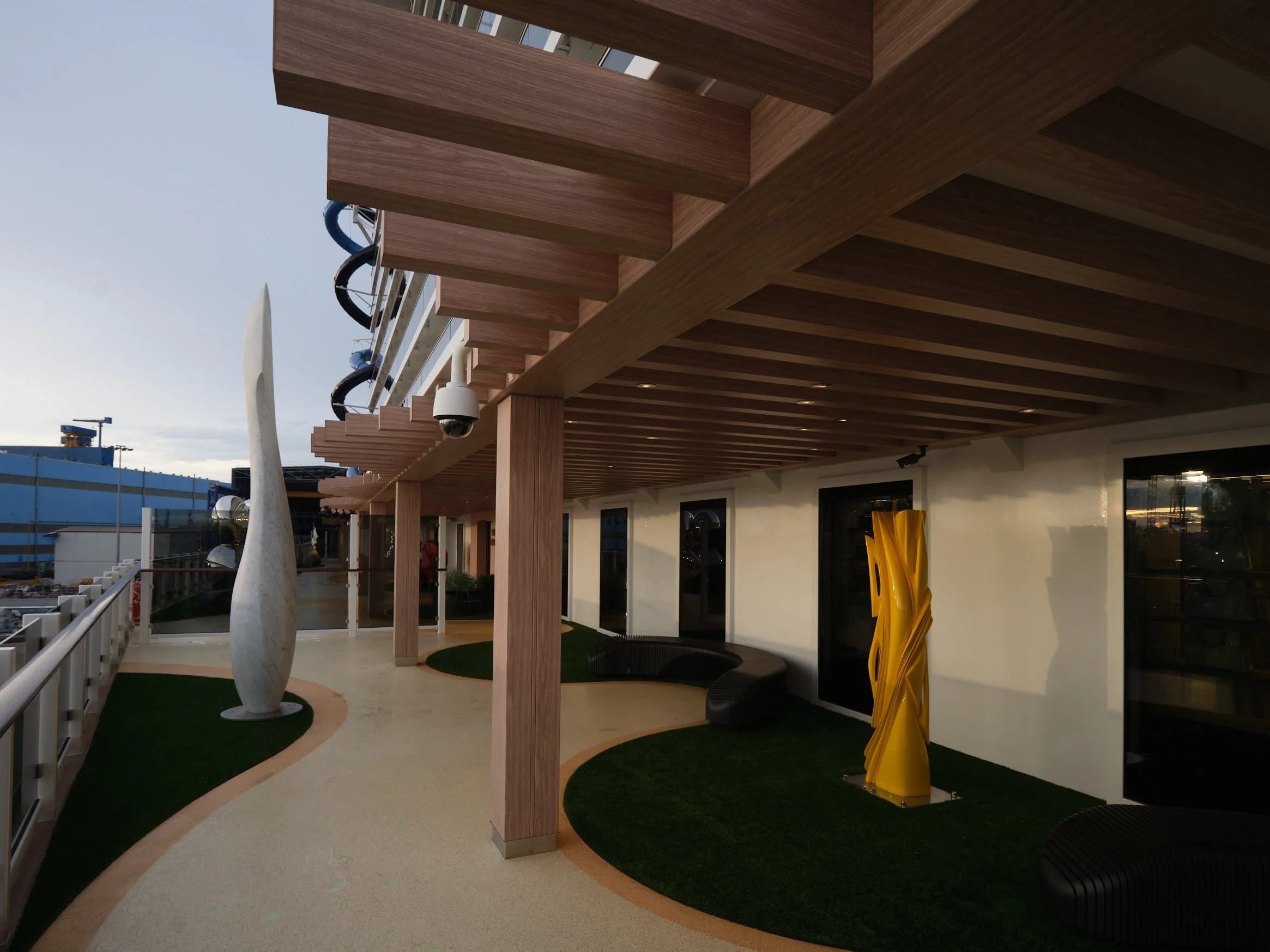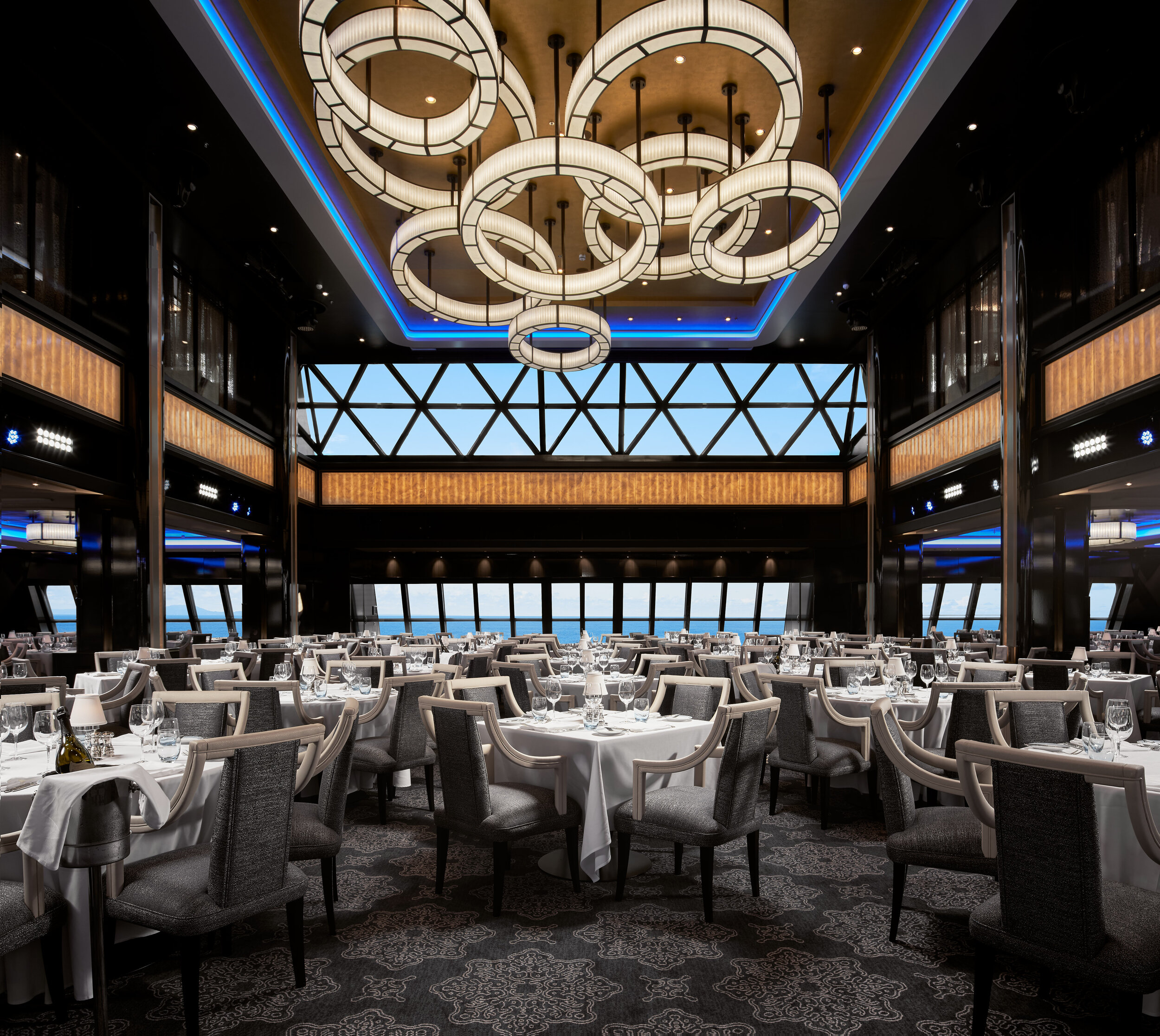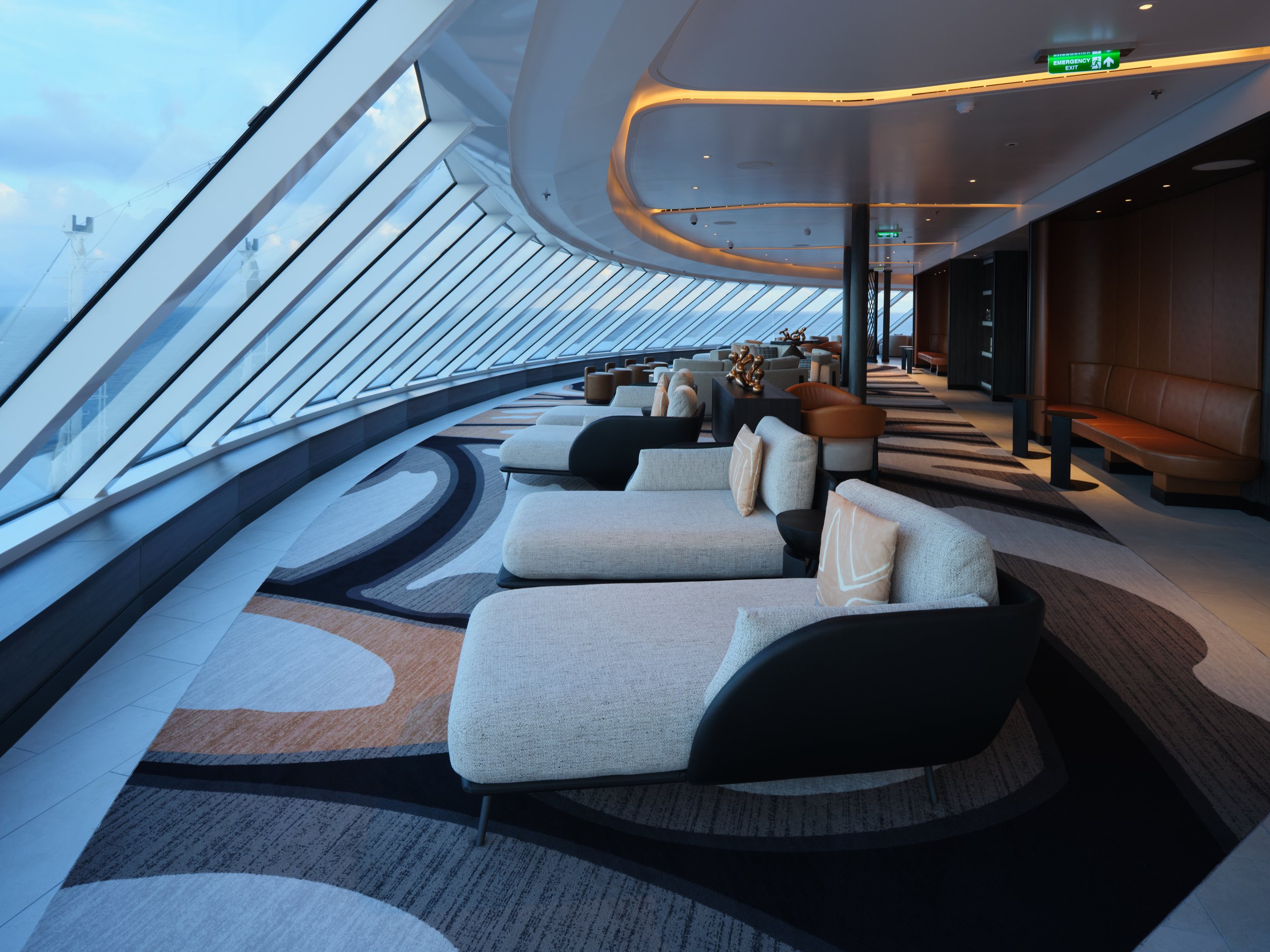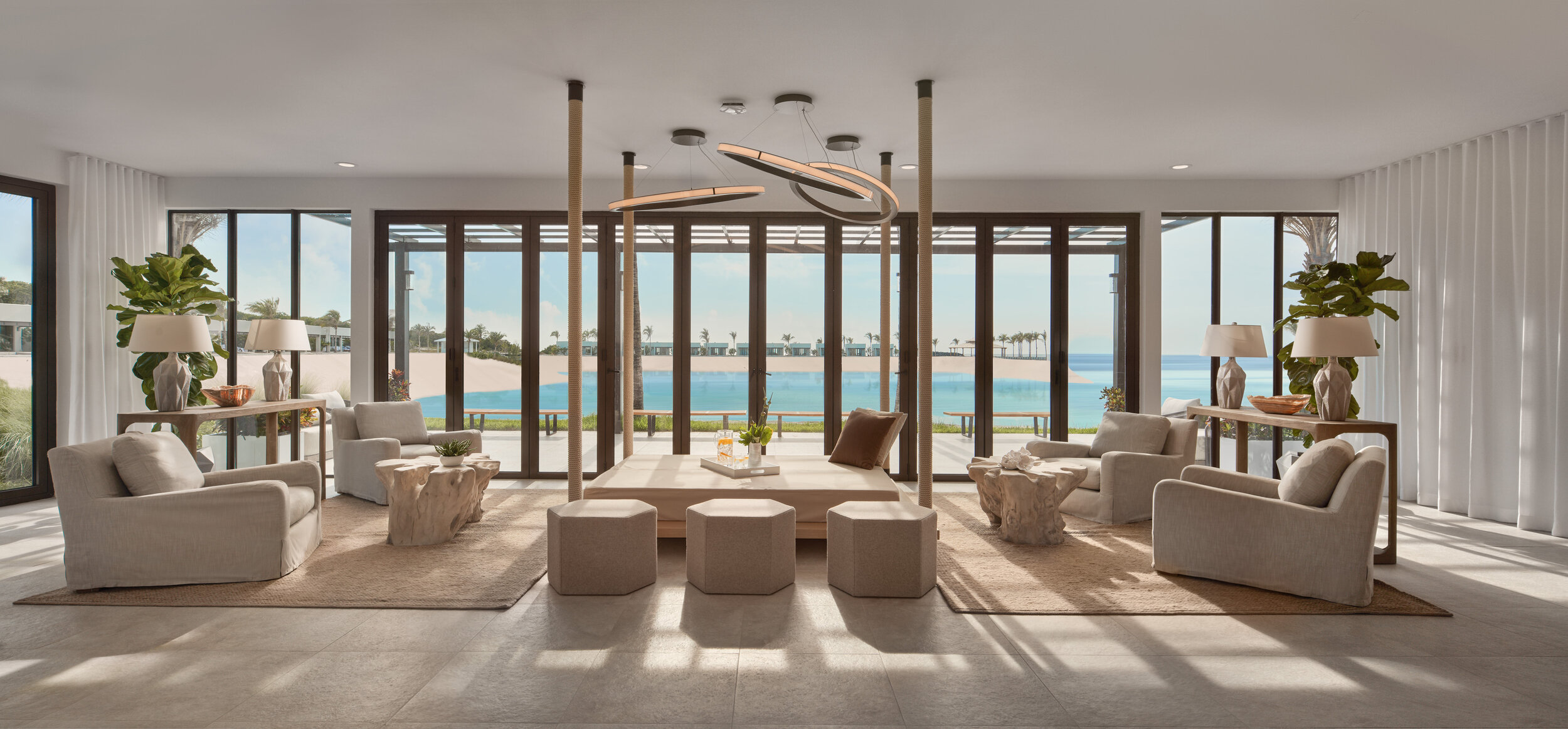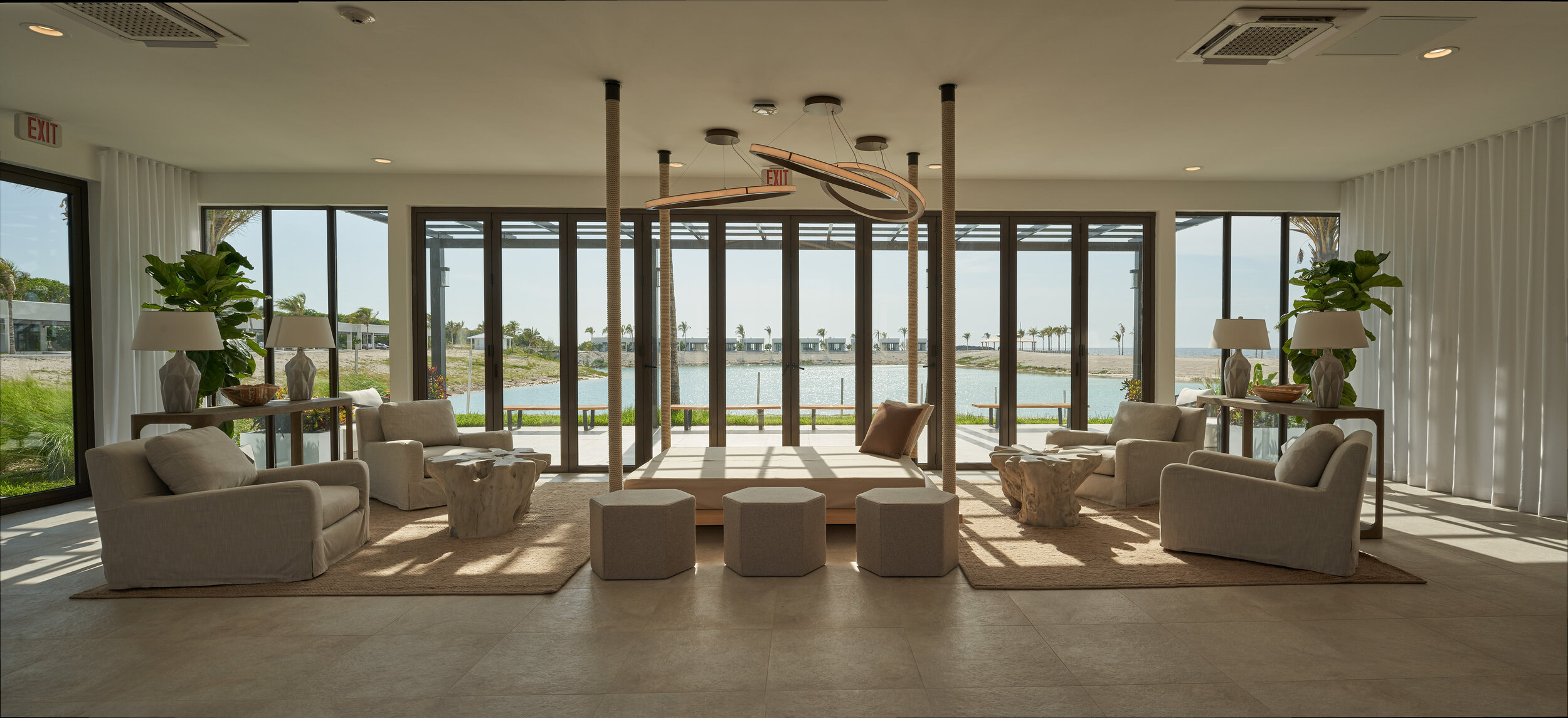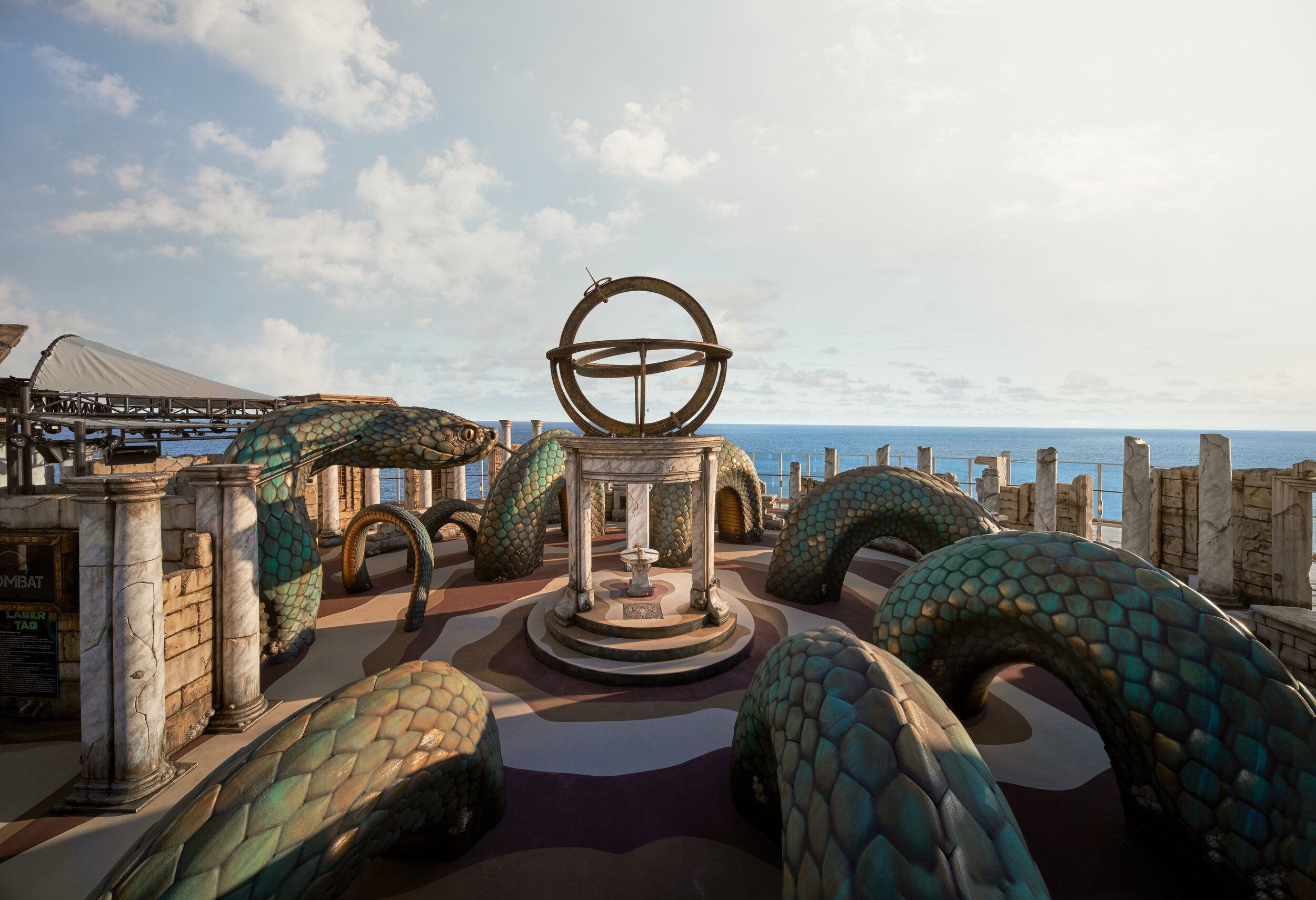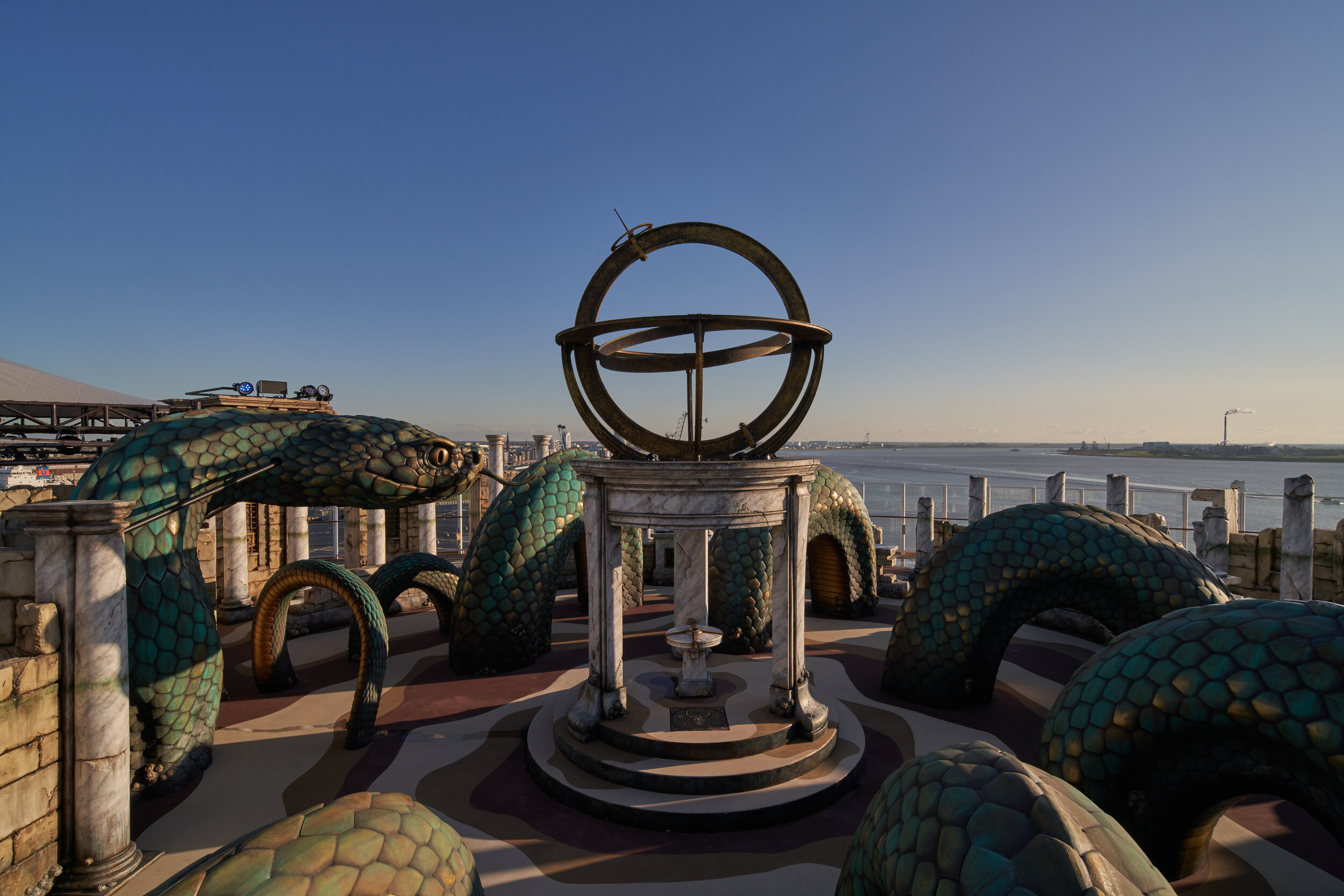Tethered set-ups are crucial for allowing us to get as much right in camera and providing client’s reassurance of their vision being executed.
Ships Are Built Differently
Ships are a unique beast when it comes to production. To photograph them well, you must be flexible, decisive, and prepared to navigate an ever-shifting landscape of unpredictable challenges. There’s always a new curveball waiting to test your creative and technical limits. I often joke with clients that my rates include manufacturing the miracles we’re inevitably going to pray for when managing so many variables.
Space is tight, so gear needs to stay lightweight yet powerful. You might find yourself shooting at 3 a.m. because it’s the only time a space isn’t crowded with guests. Or you’ll be forced to recreate a perfect sunrise with flashes when it’s a cloudy day at the port in Iceland and you’ve only a two-hour window to capture a specific luxury suite that is intended to sell for $ 20,000 a week.
And of course, the view has to be transformed into something spectacular. We’re selling the dream, after all: warm sunsets and turquoise seas, not just the steel and glass of a ship’s architecture.
Land-based shoots usually offer far more control. I can wait for perfect light, adjust house lighting, close window shades, or rearrange furniture that doesn’t weigh 300 pounds. On a ship, that luxury doesn’t exist. Operations and guests’ experience are the priority. So it’s about delivering impactful results while minimizing our footprint.
Then there’s the paperwork and logistics. Flying teams and equipment around the world isn’t as simple as booking a ticket. I’m on a first-name basis with customs officers thanks to countless Carnets and the behind-the-scenes coordinating it takes to keep international productions running smoothly.
I’ve handled over a dozen international productions for cruise clients at sea and in dry dock. And will leverage that experience to deliver amazing results and a headache-free production.
